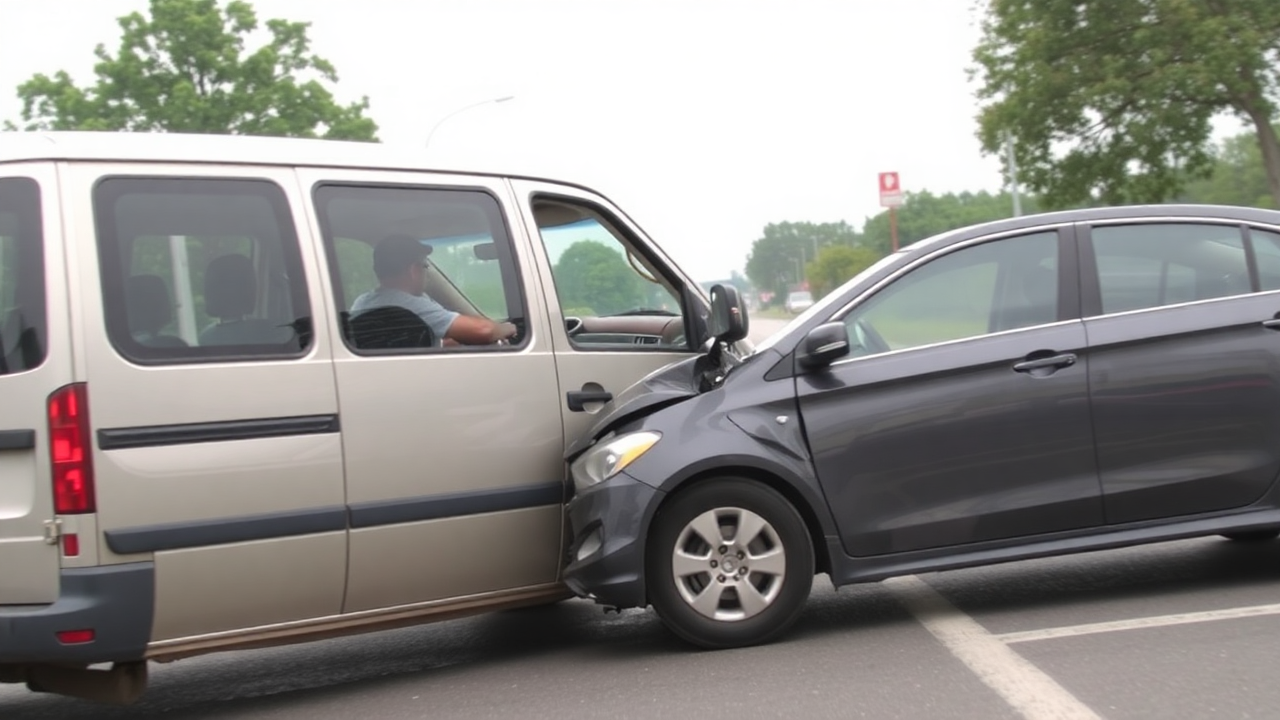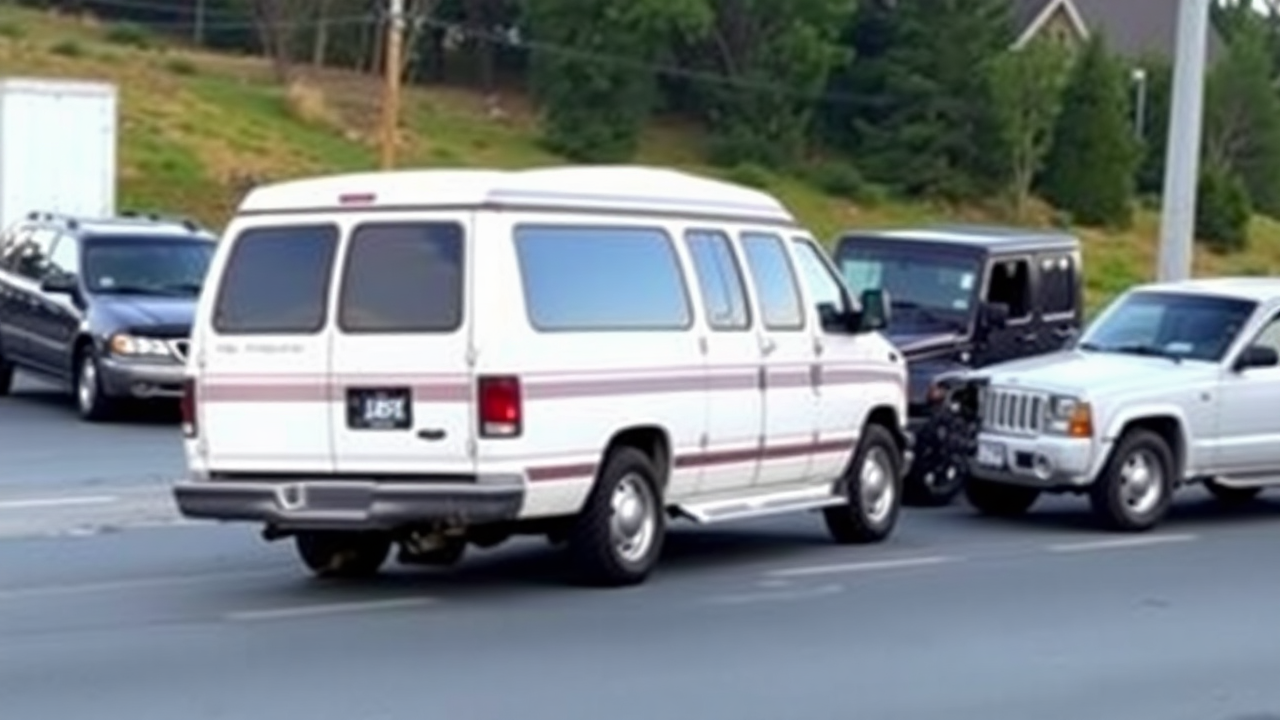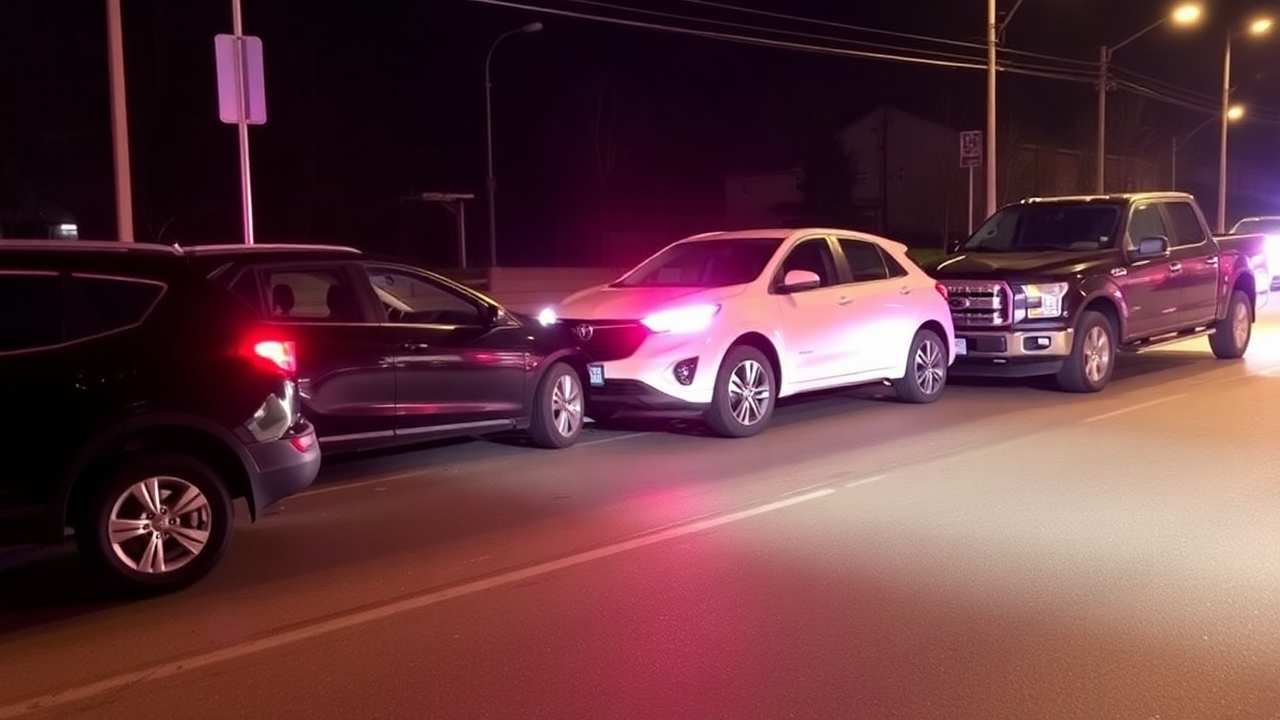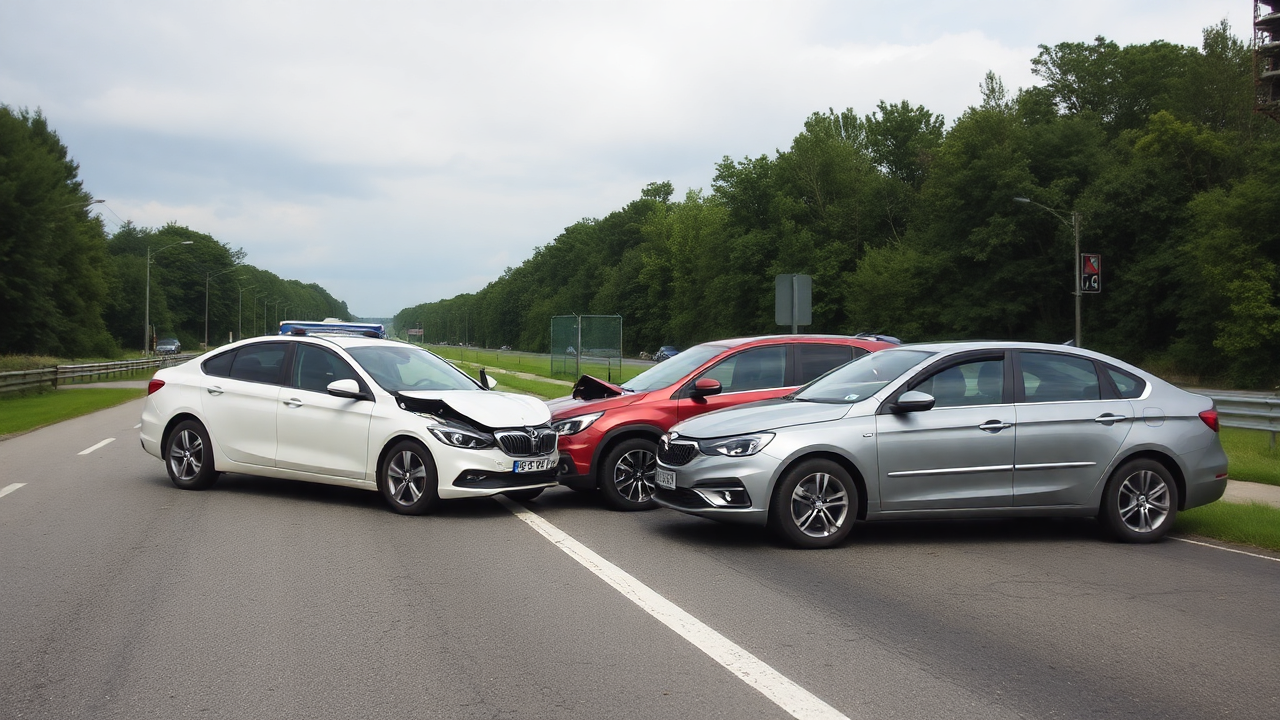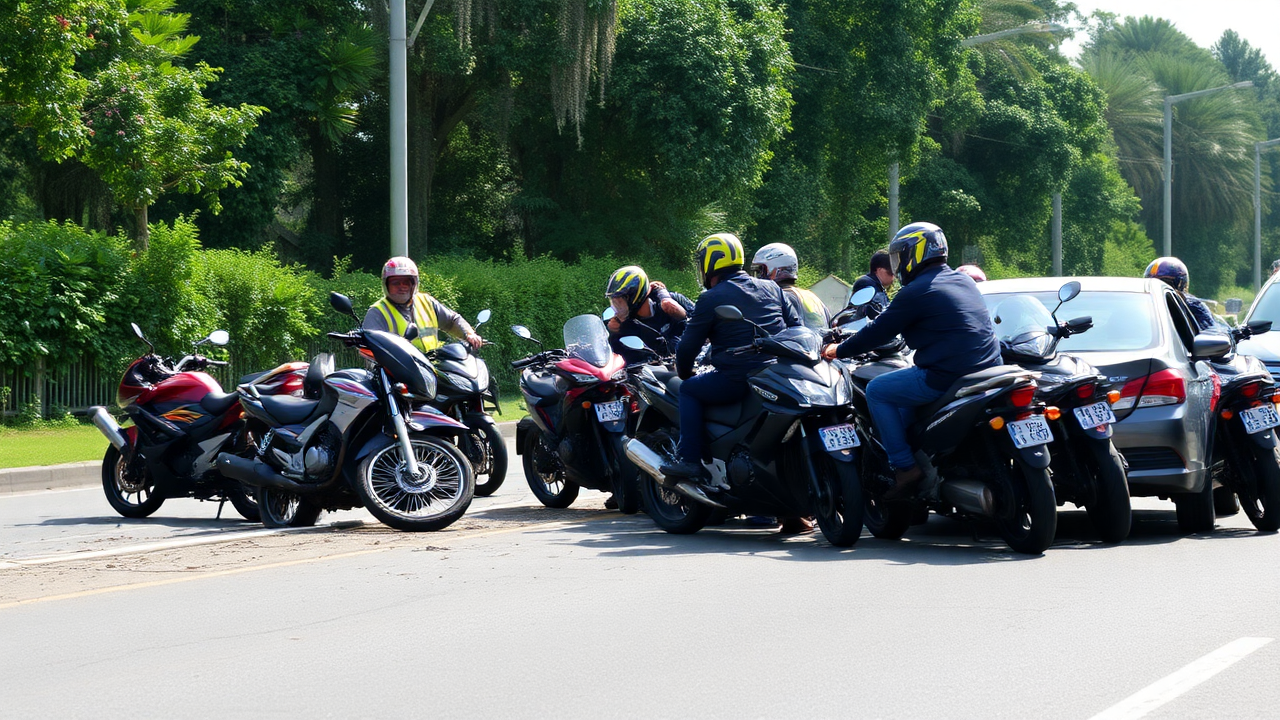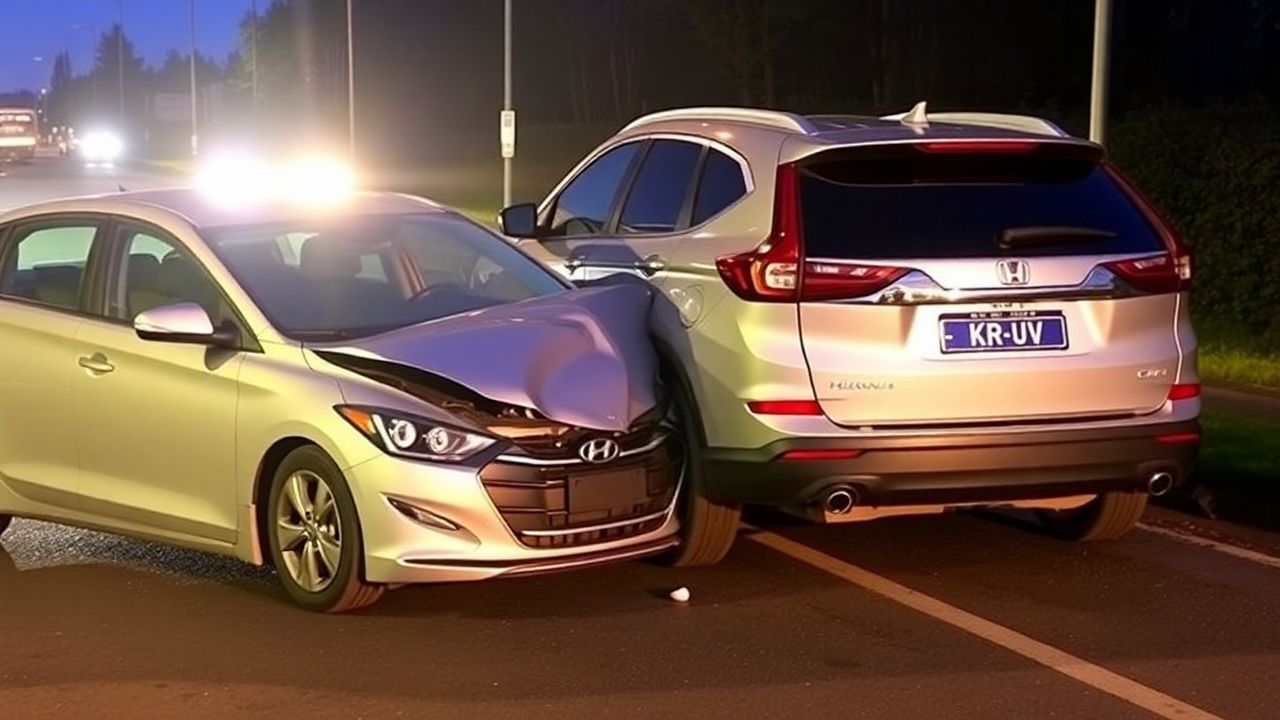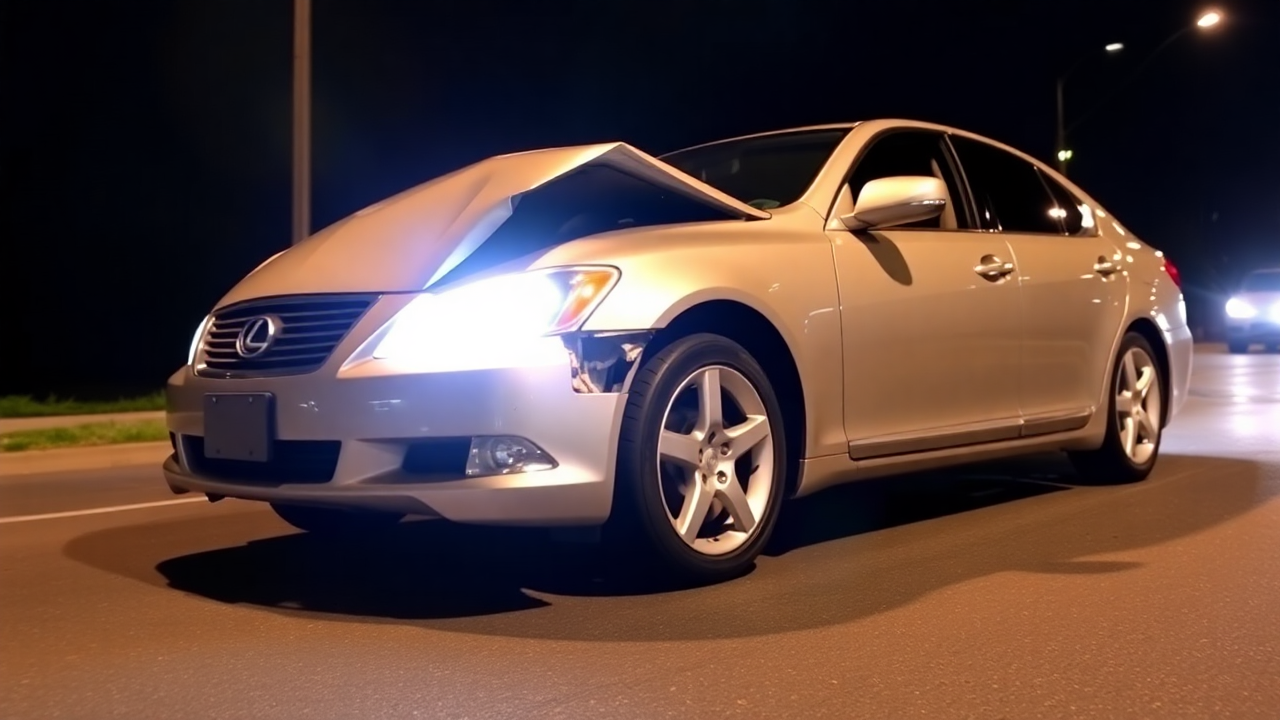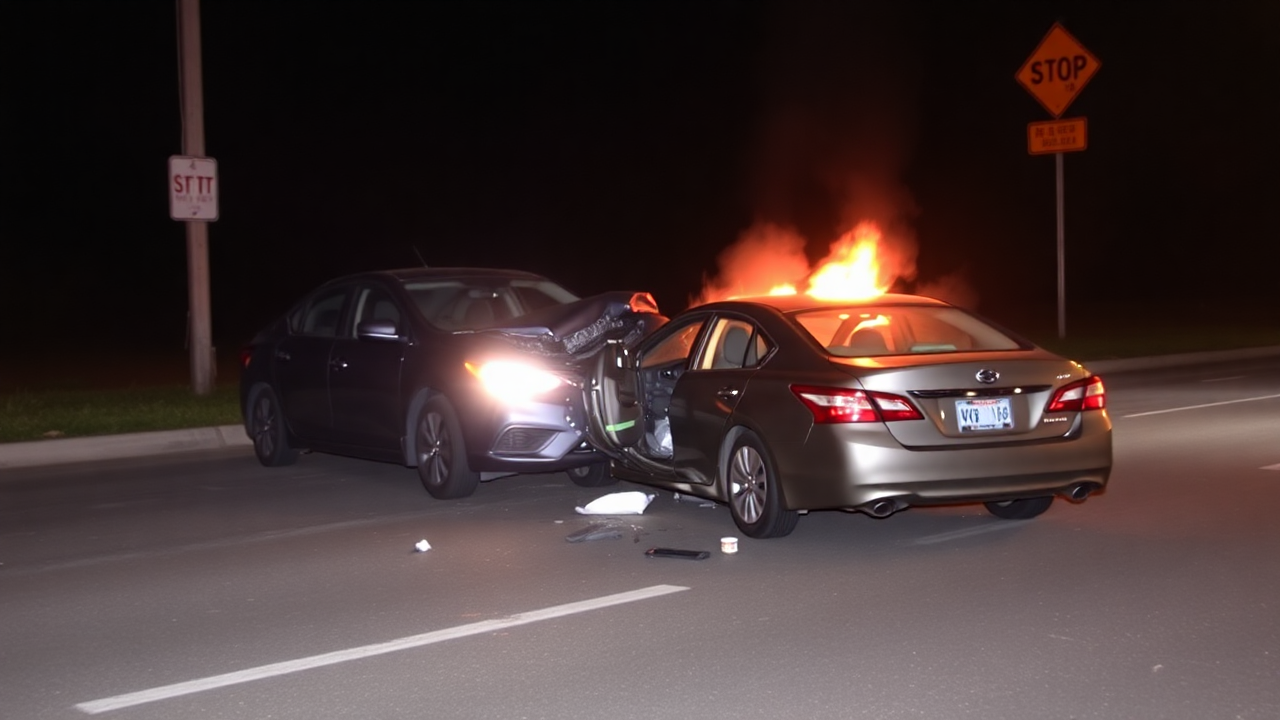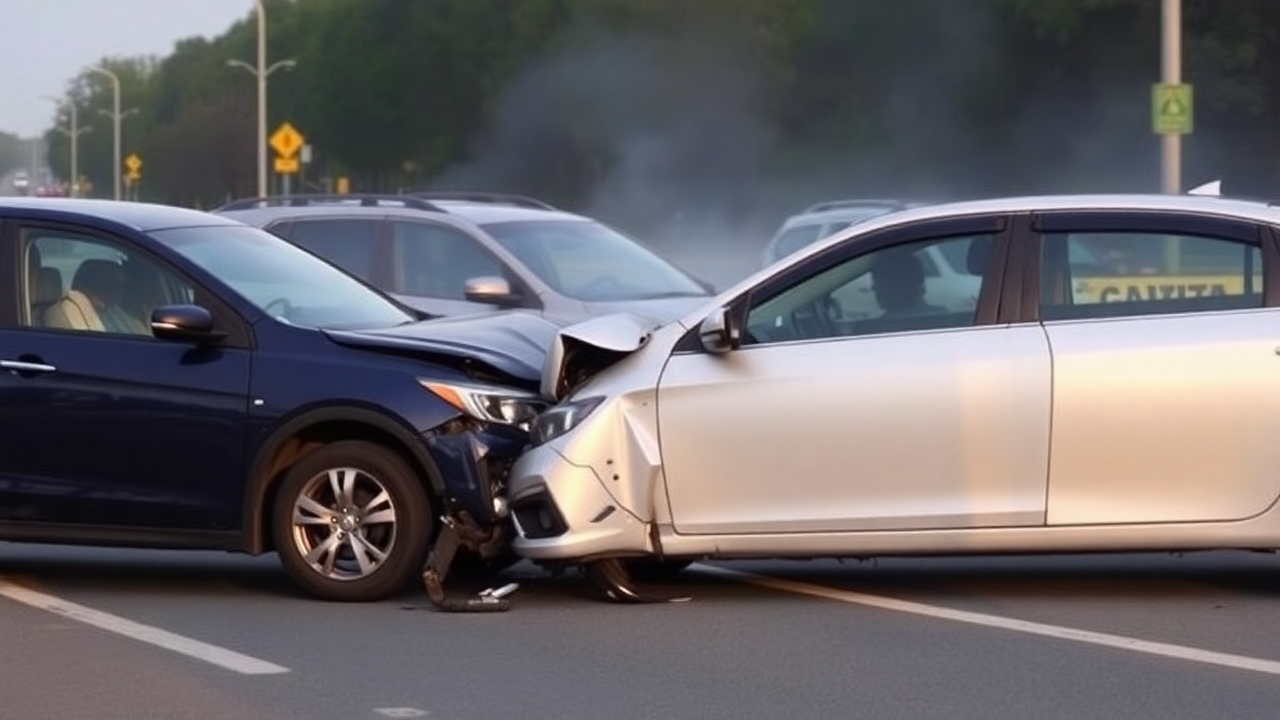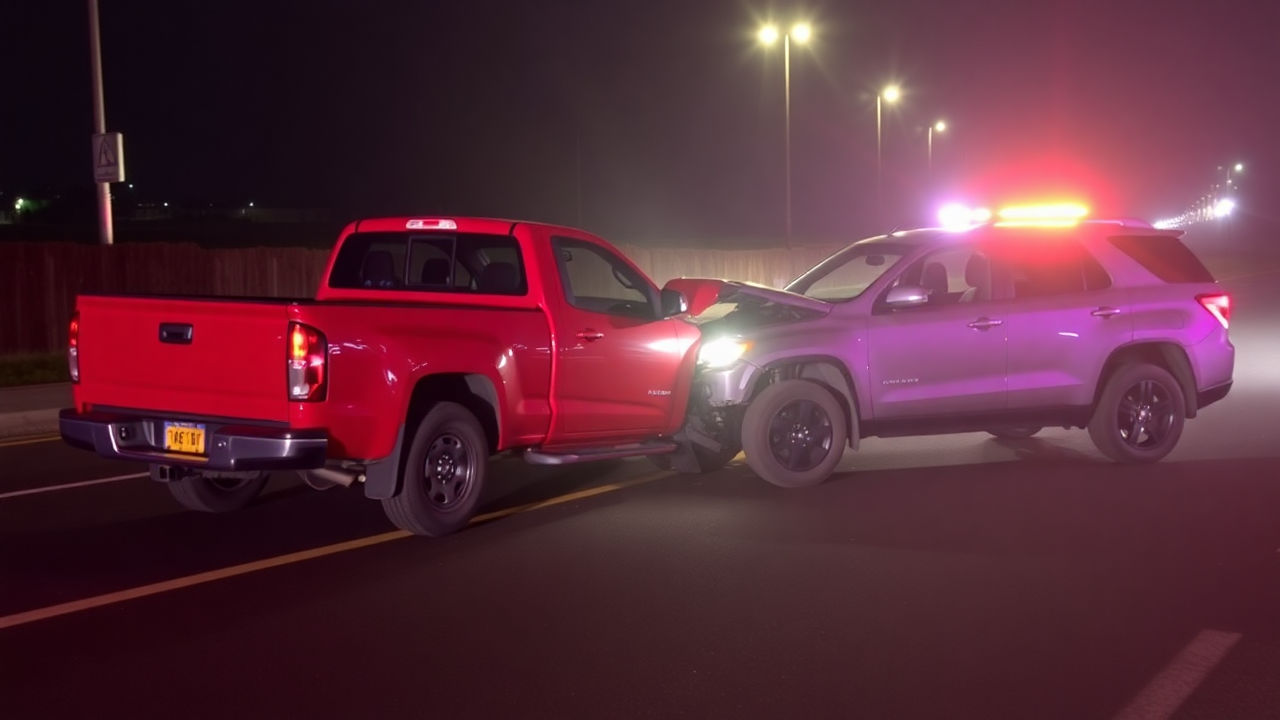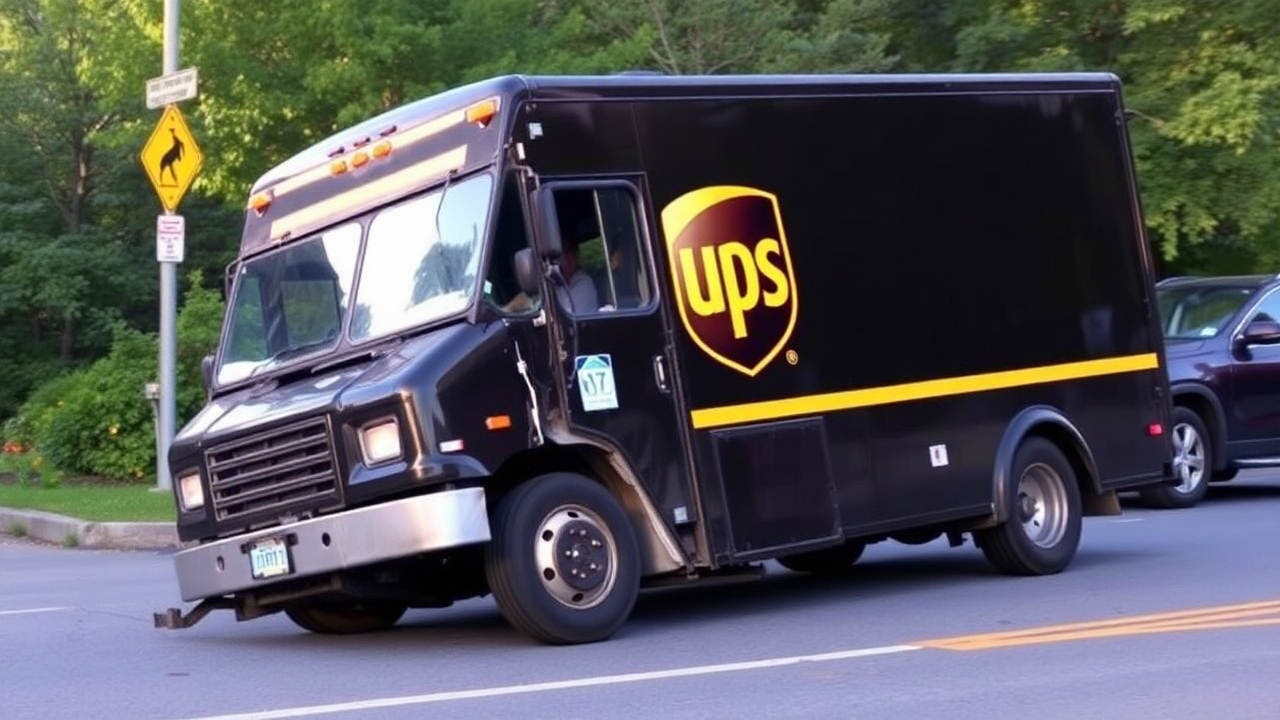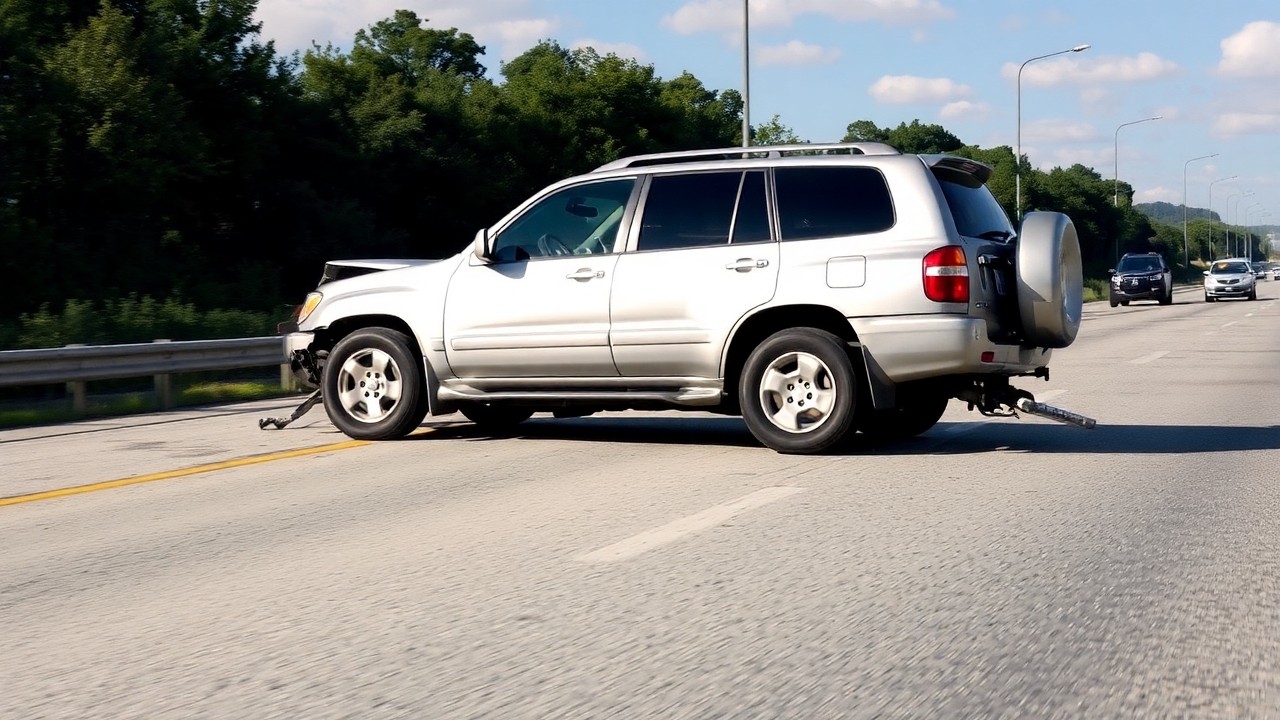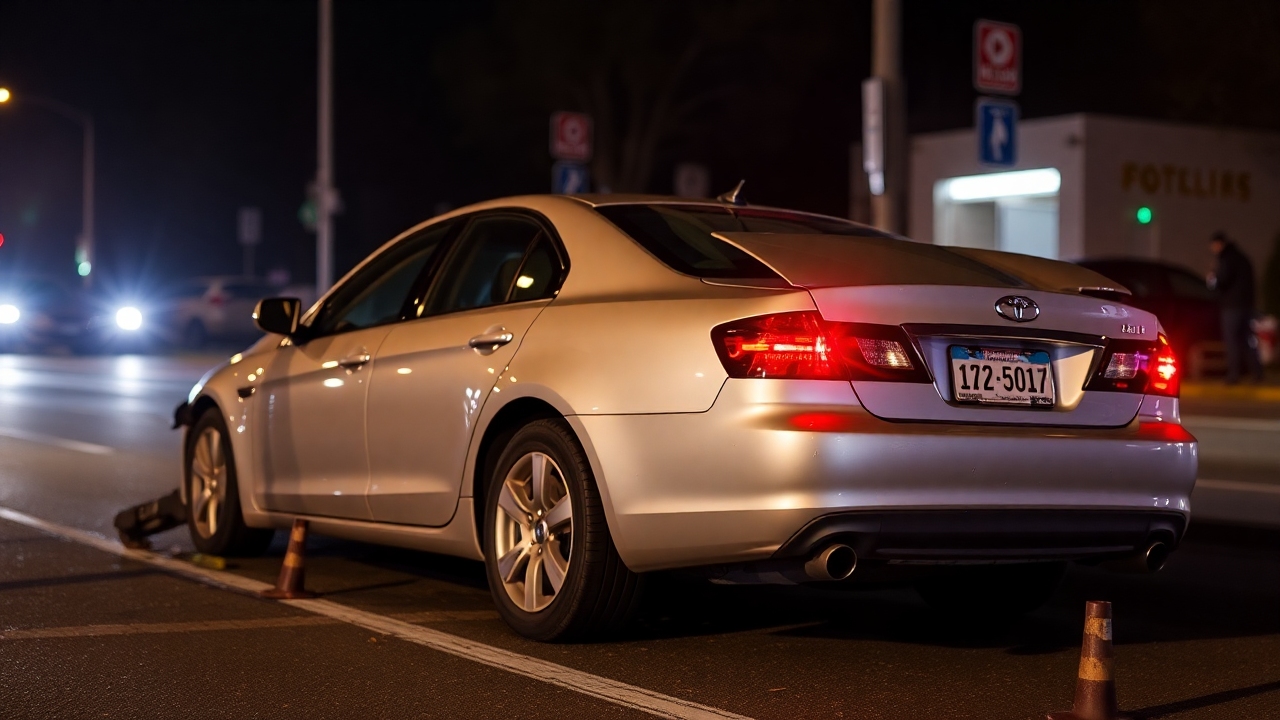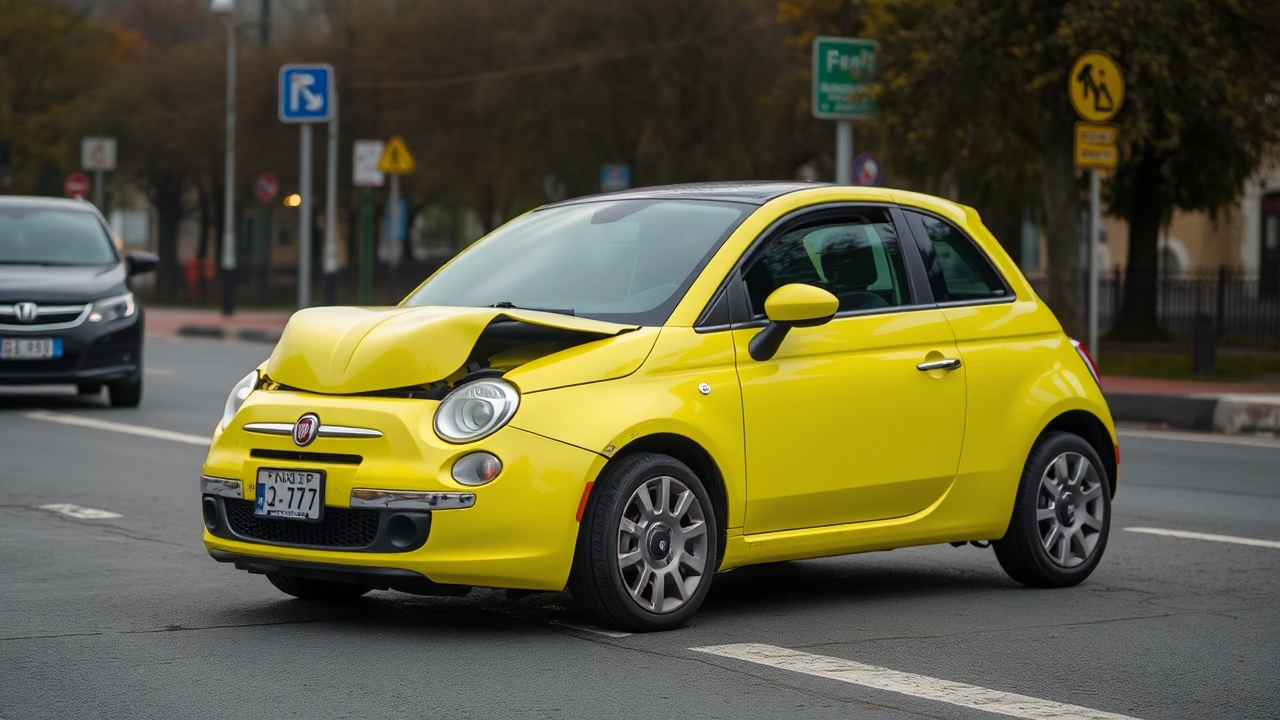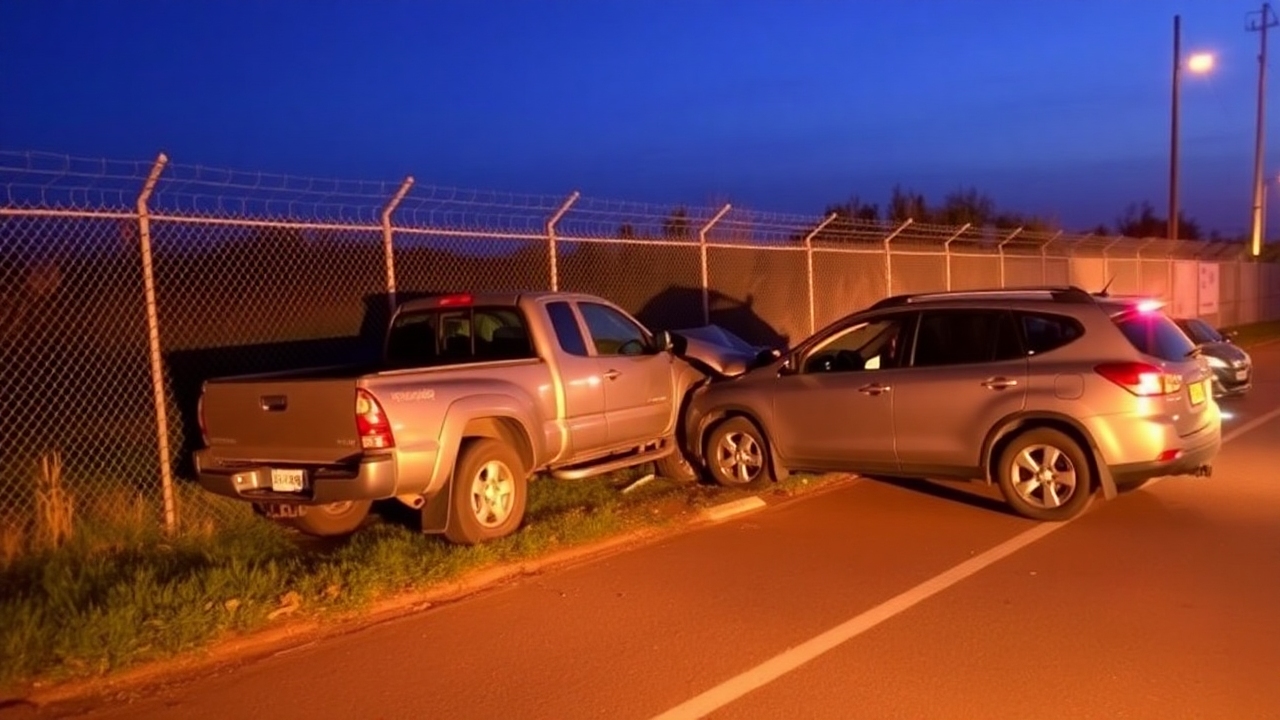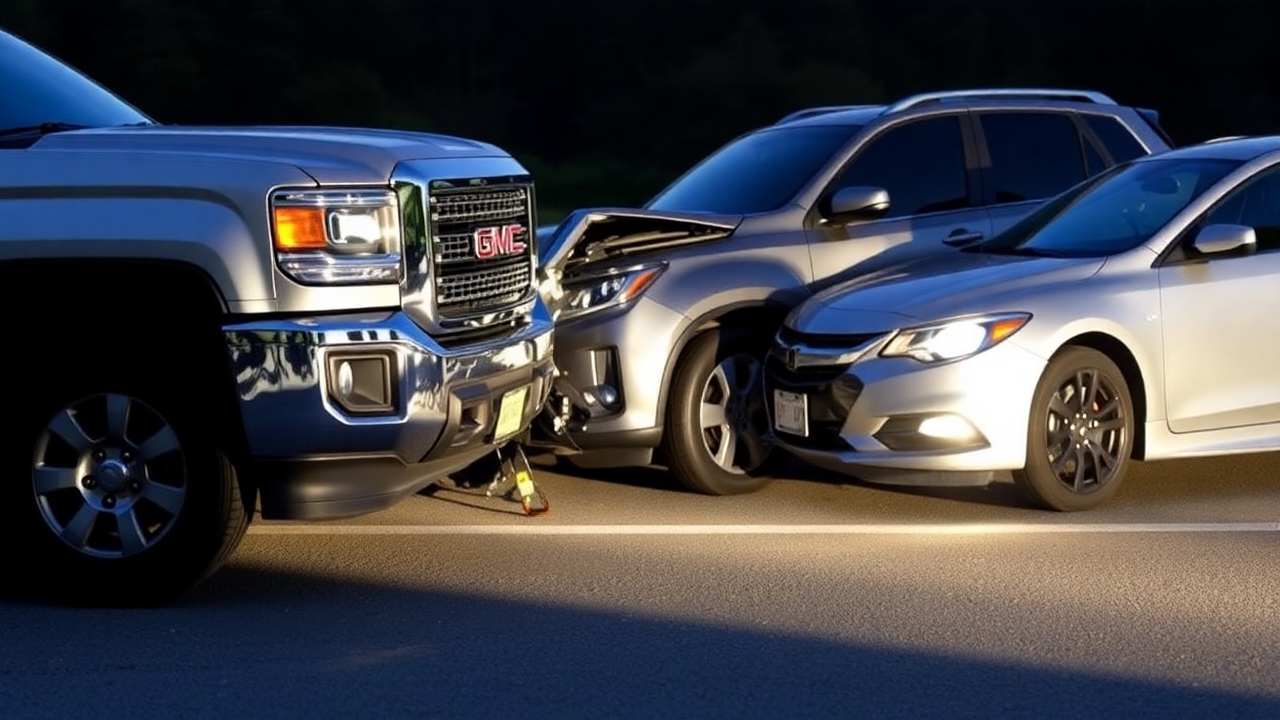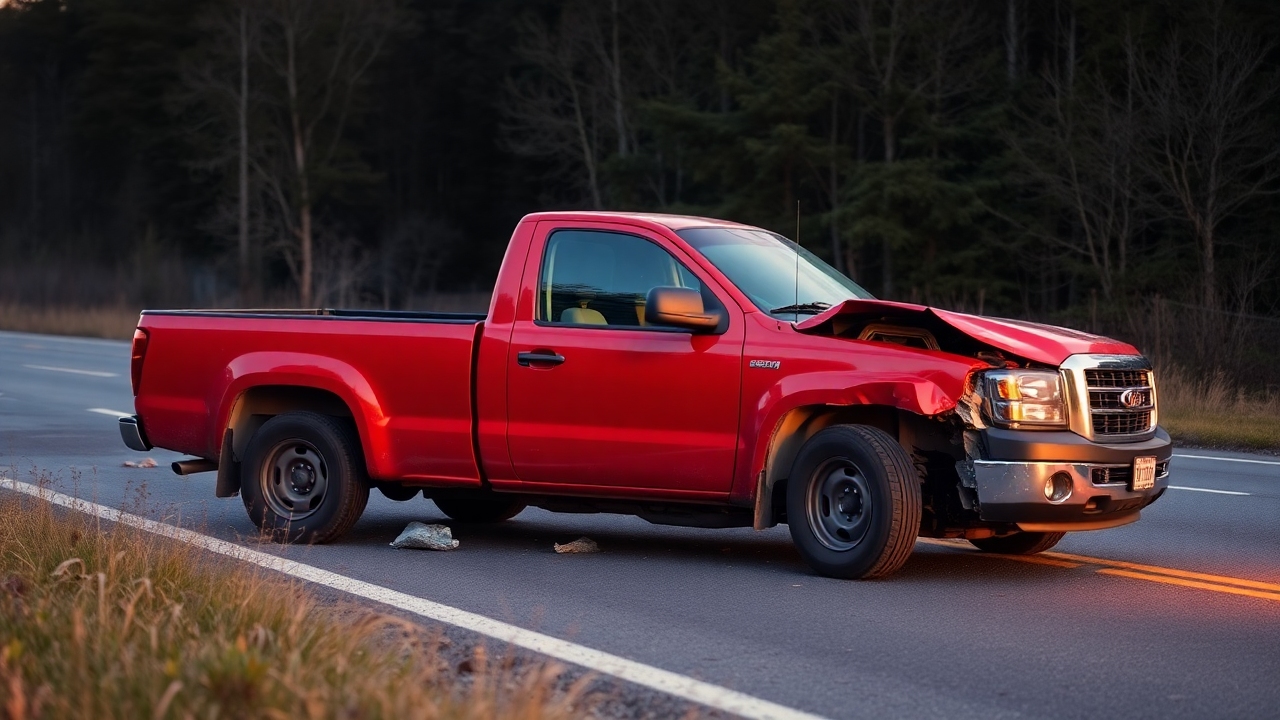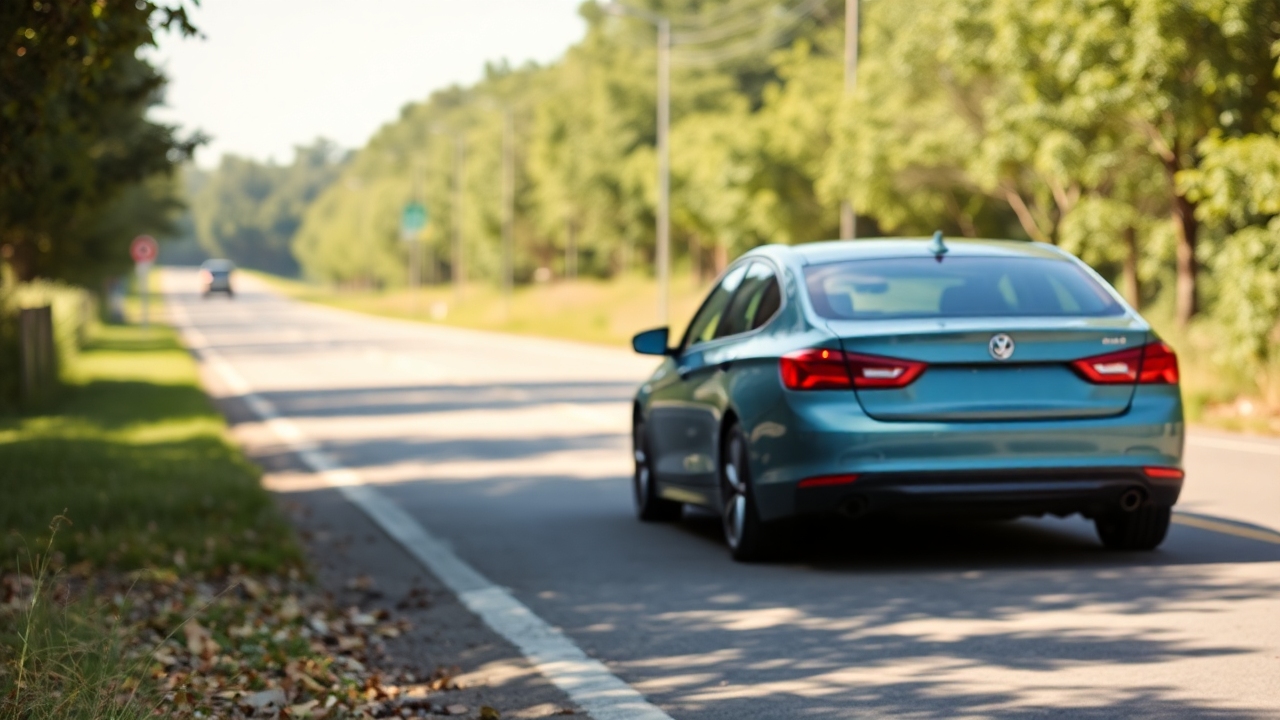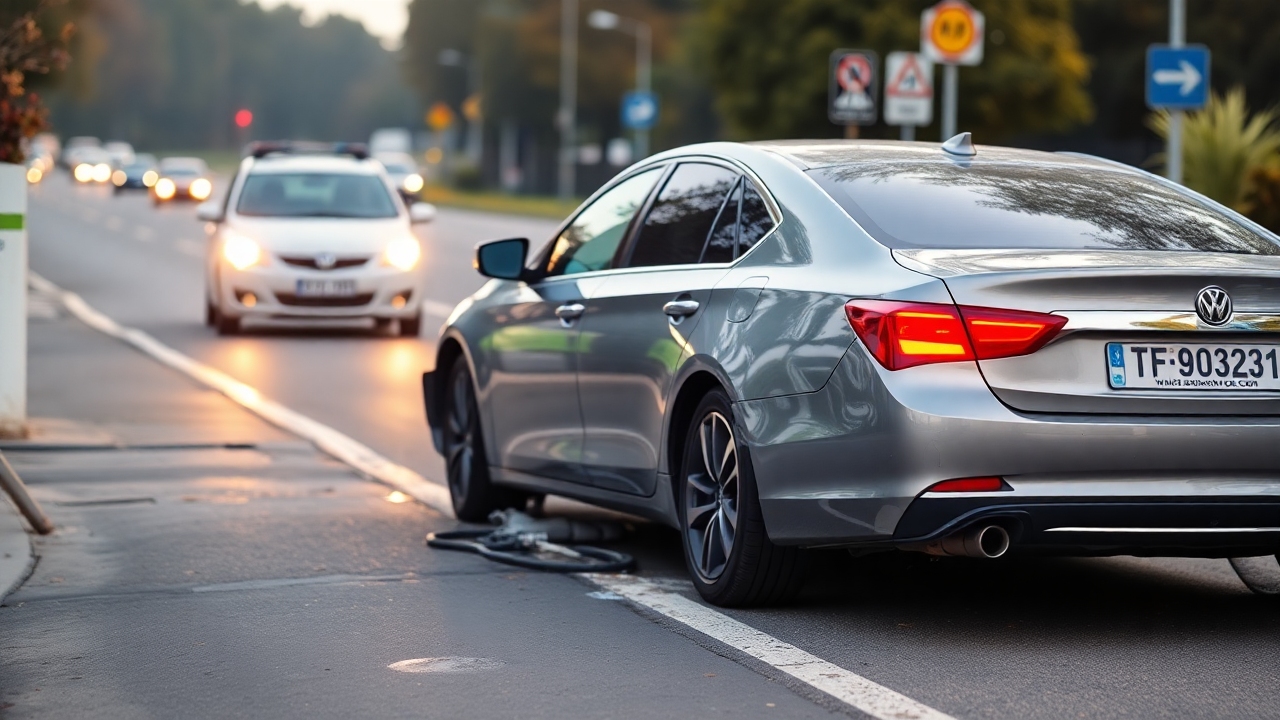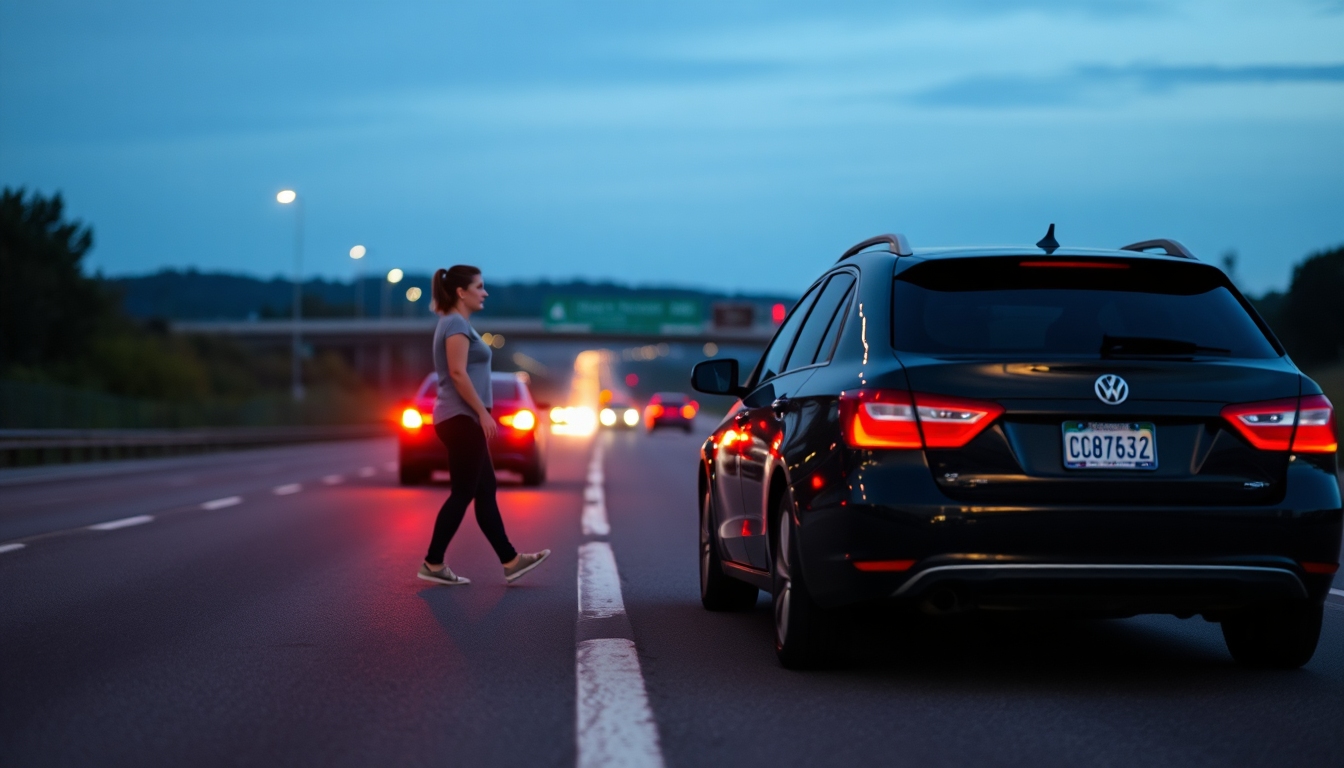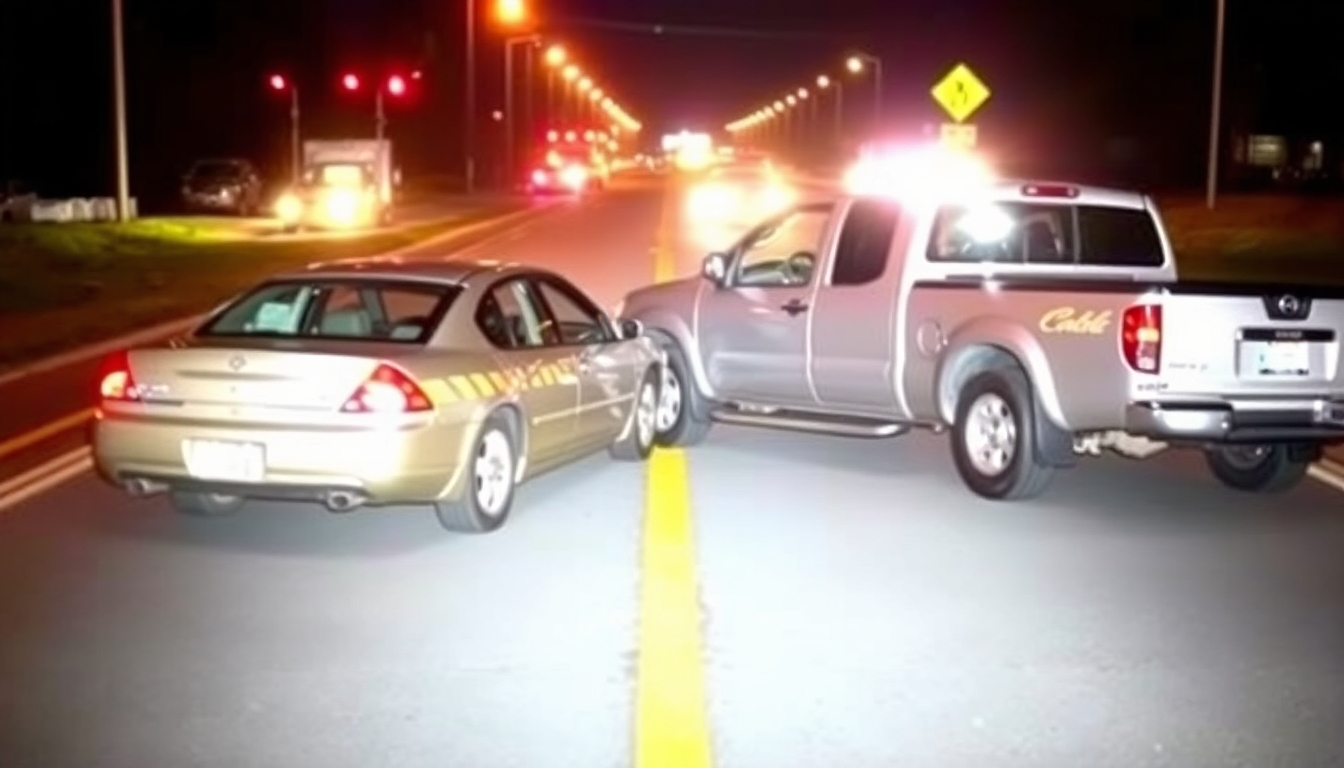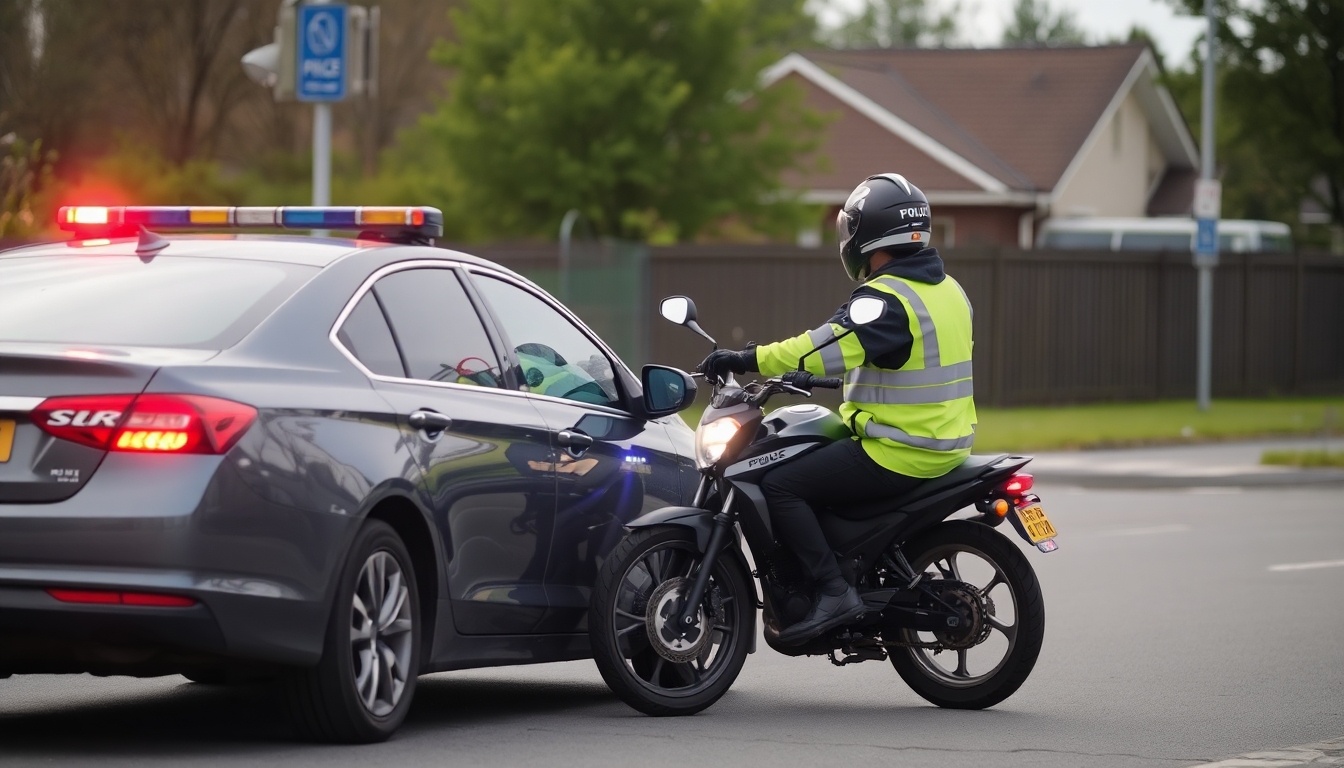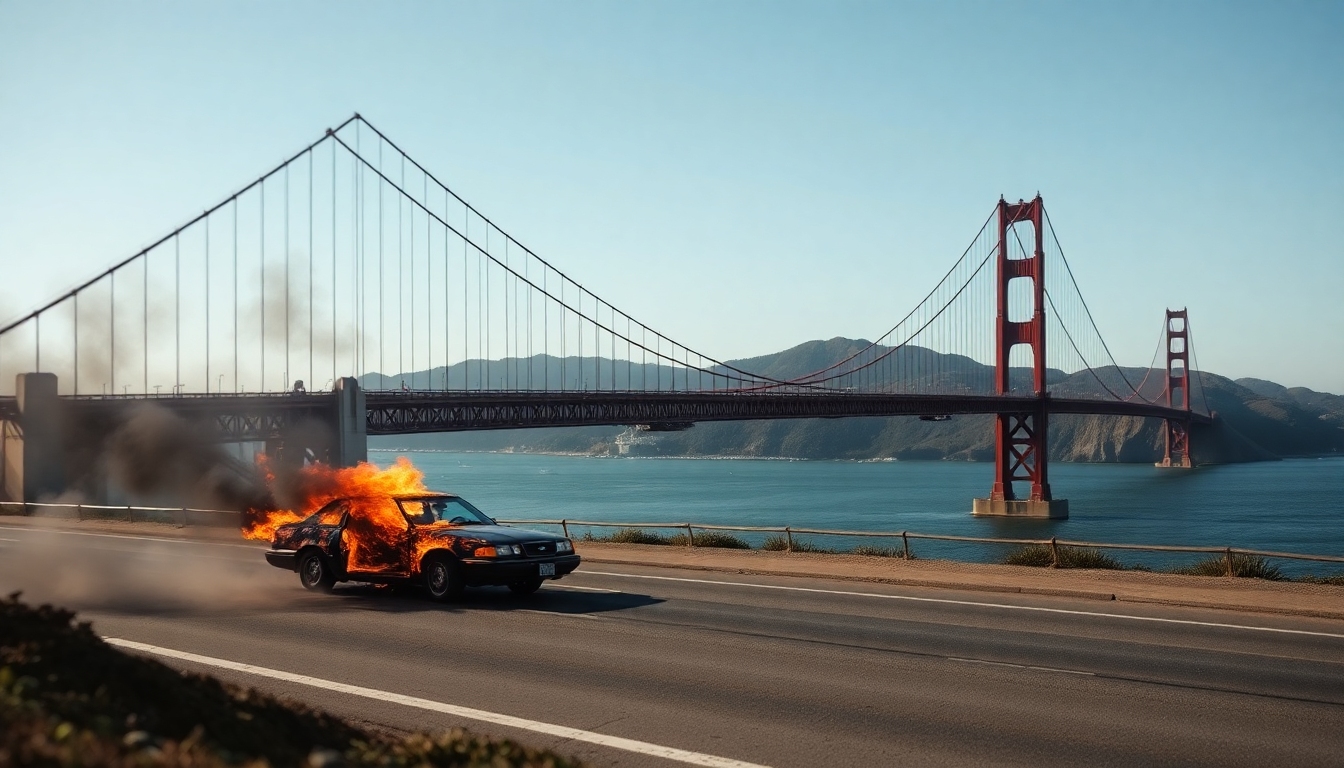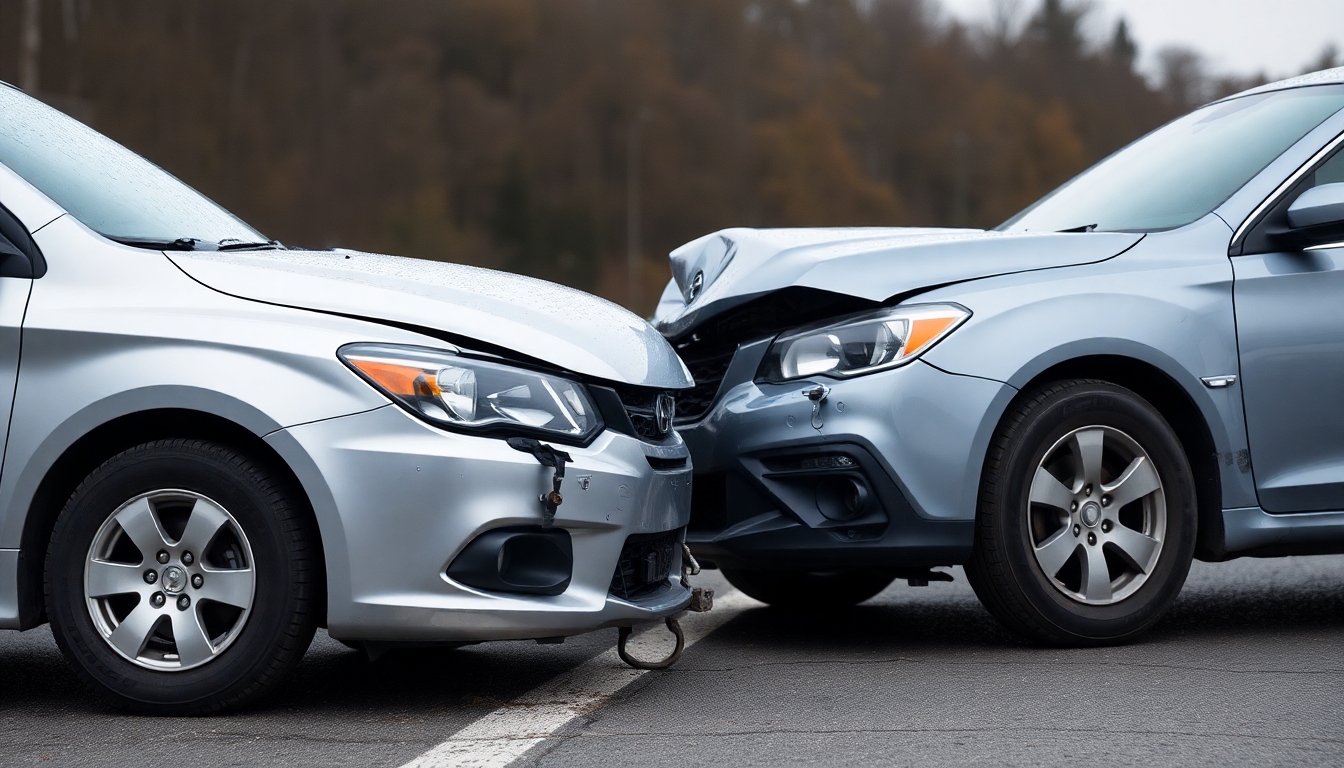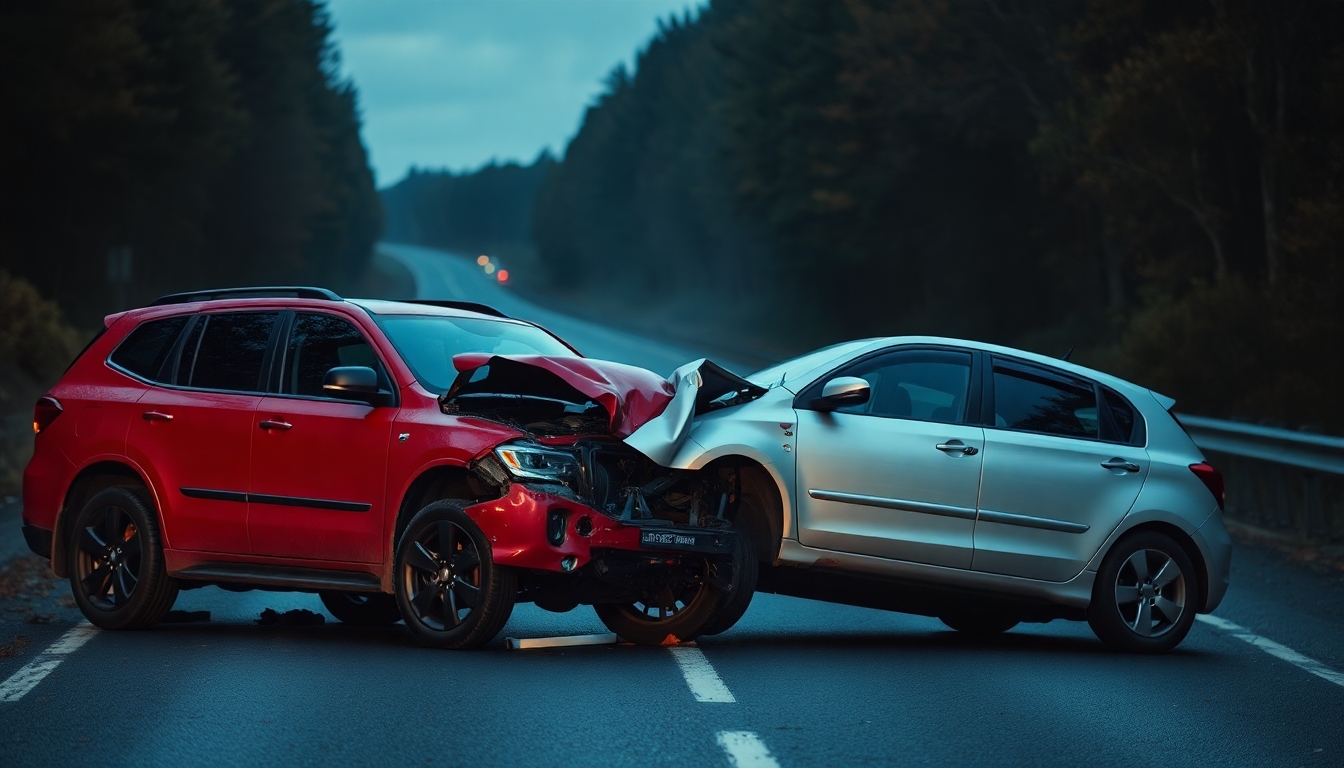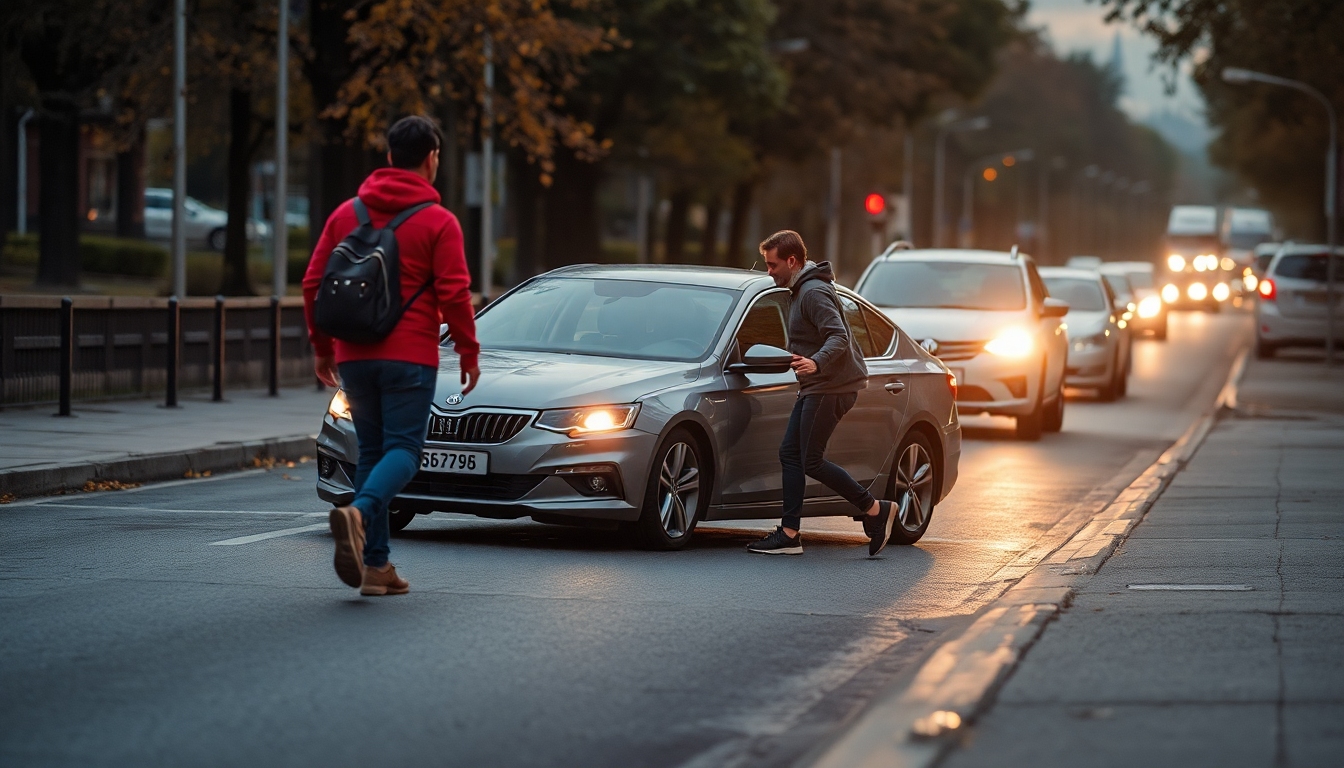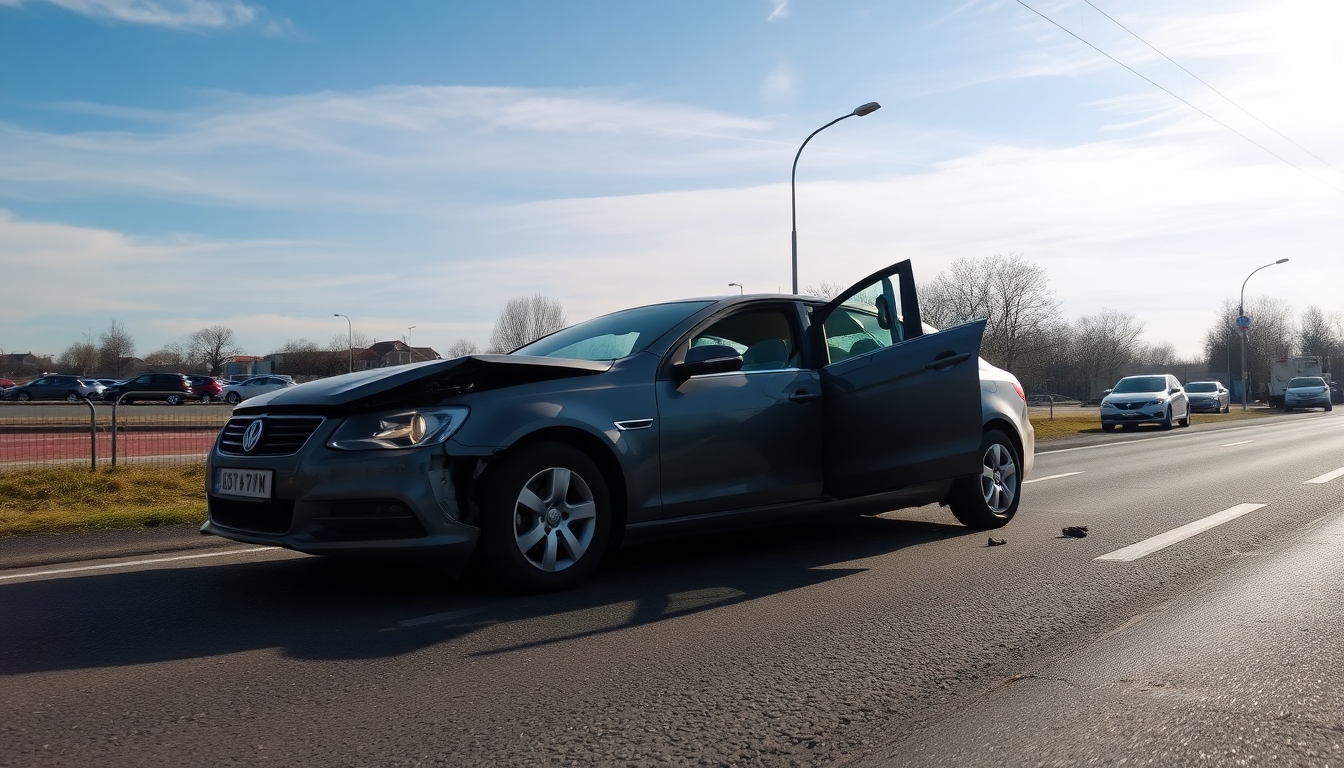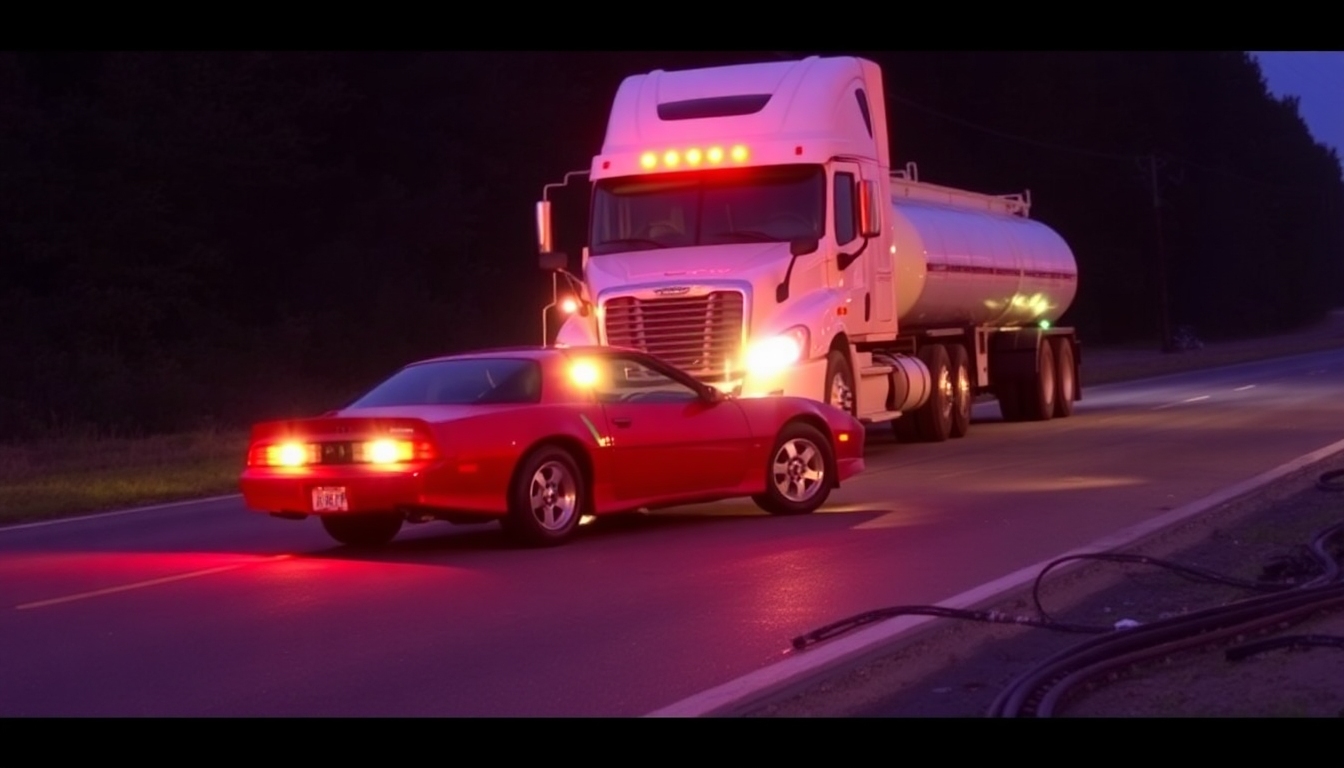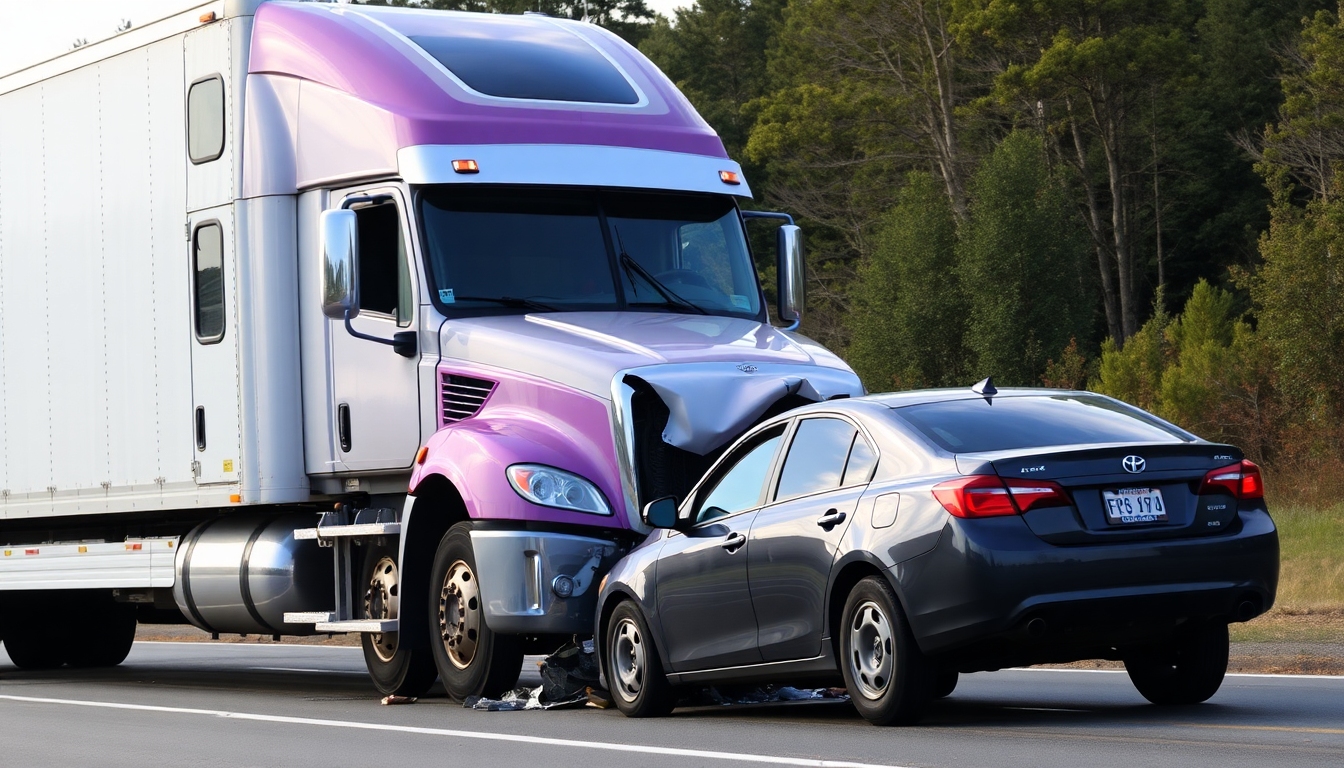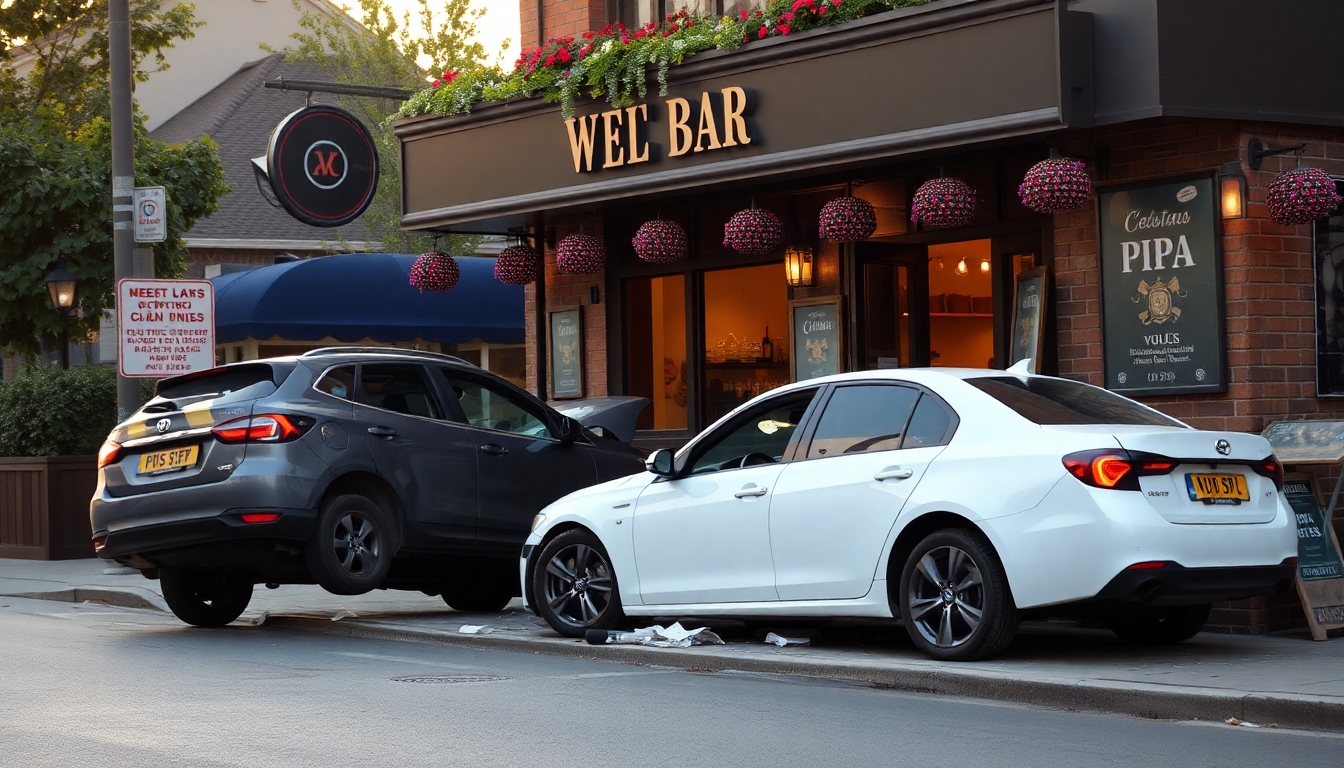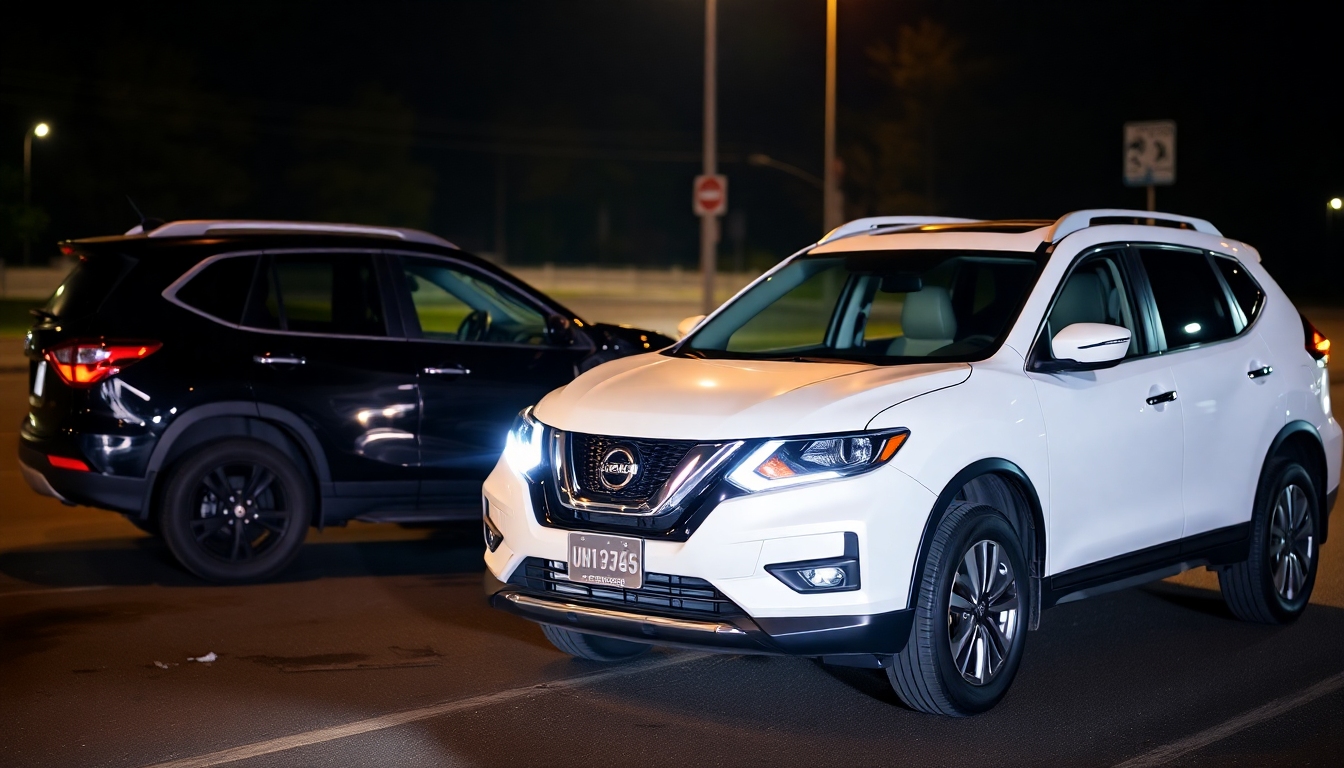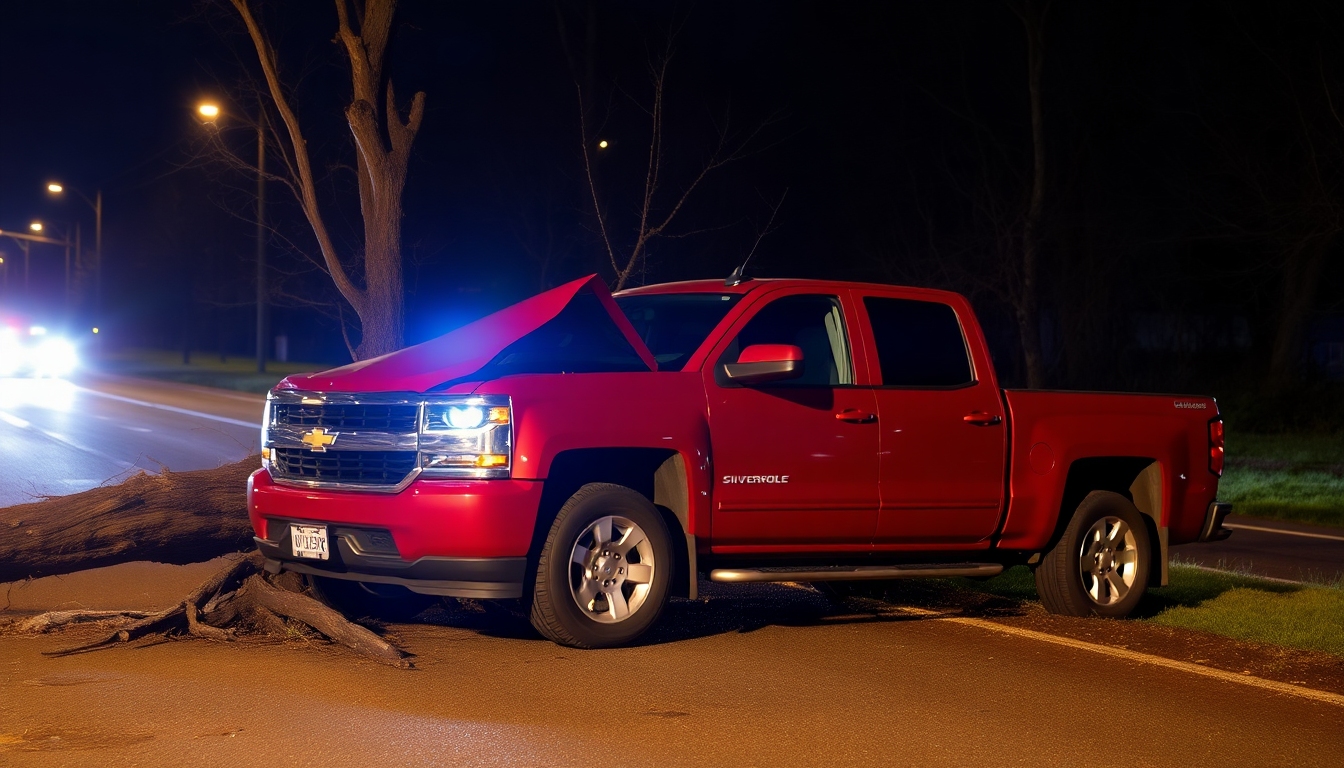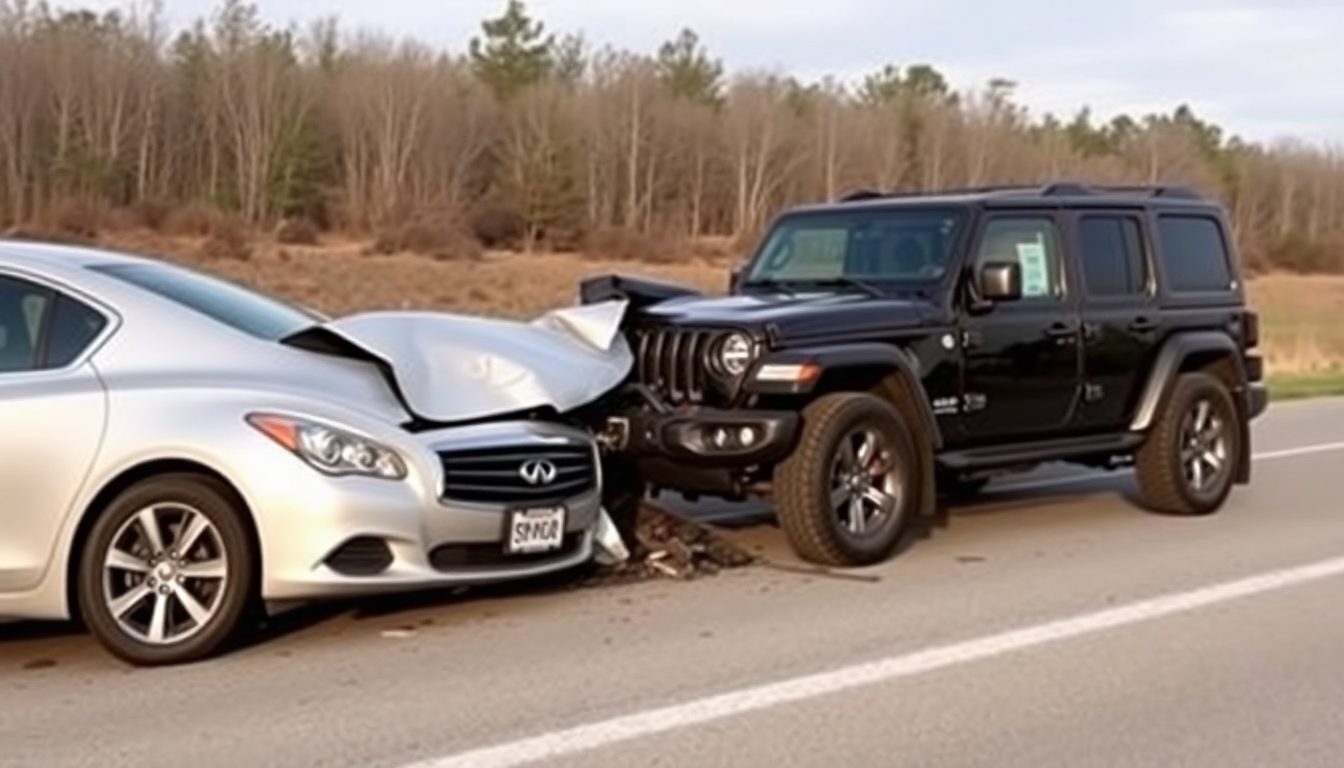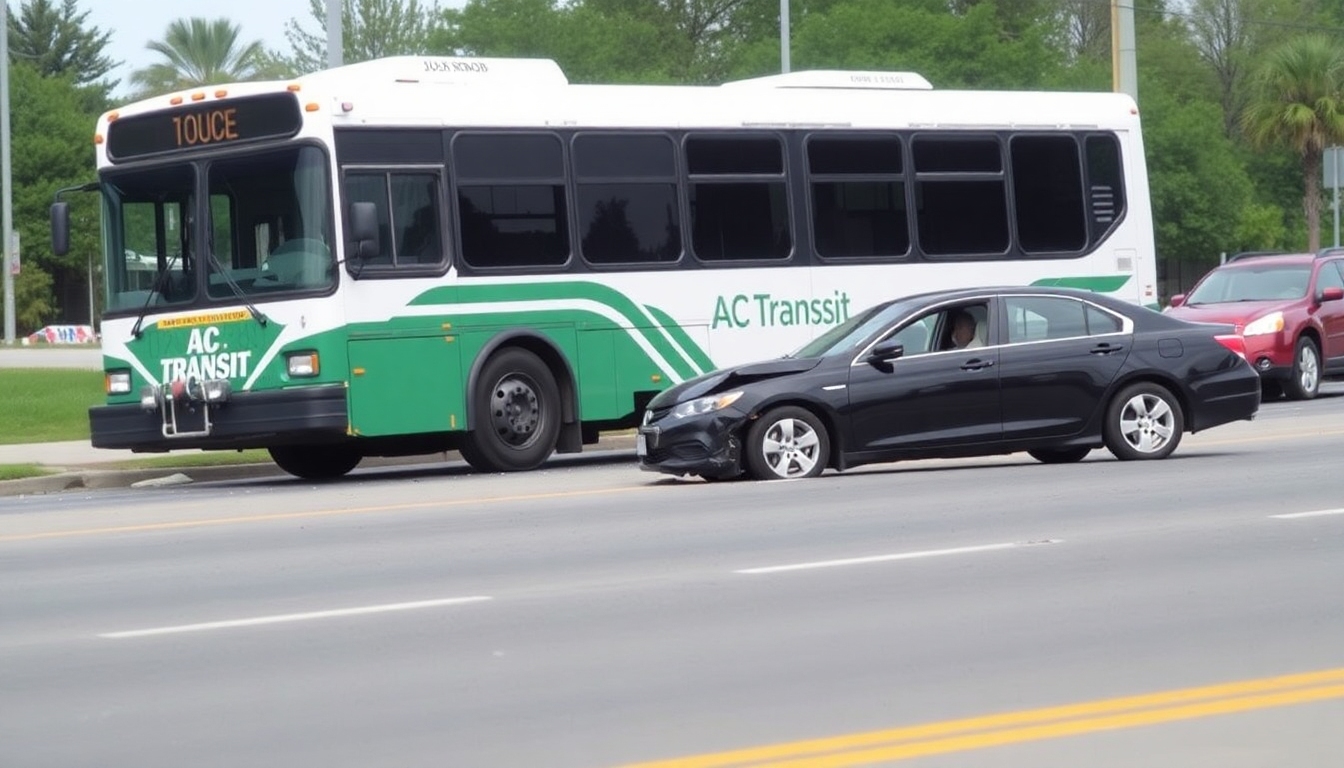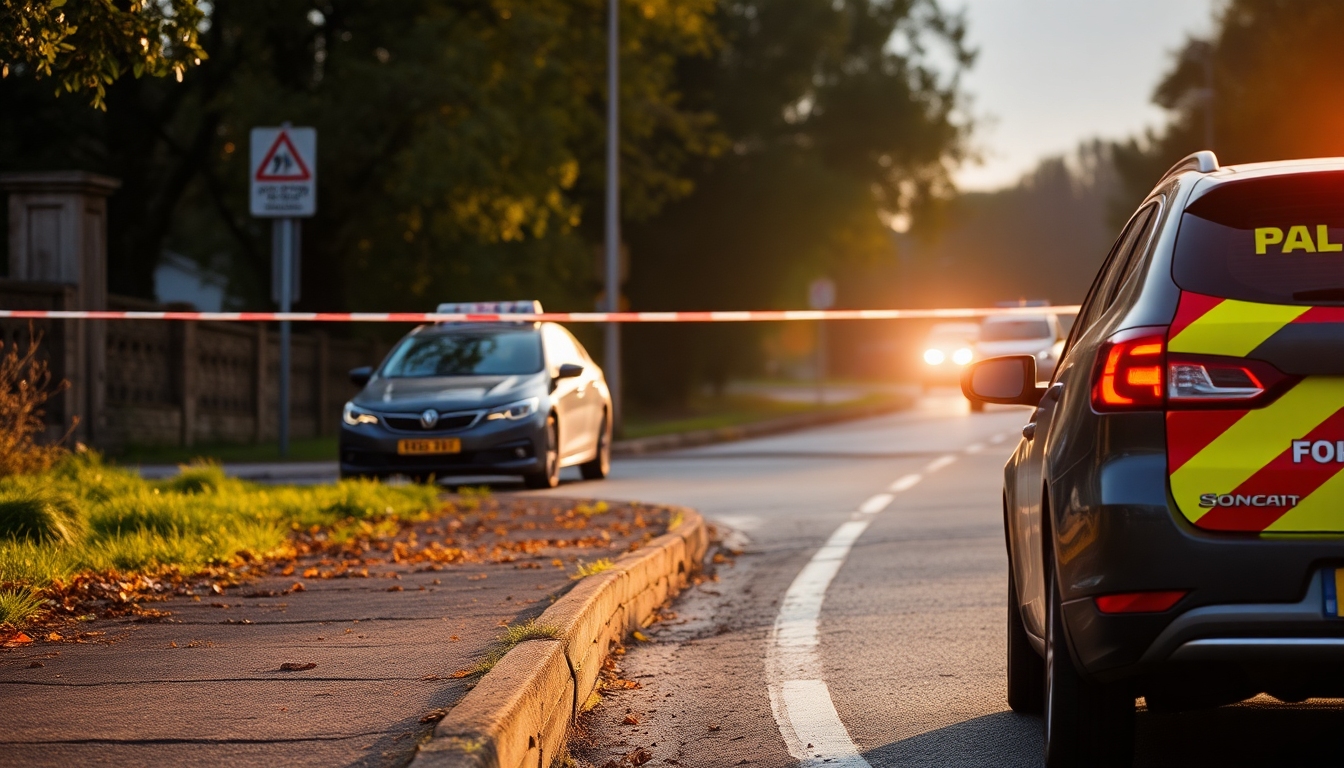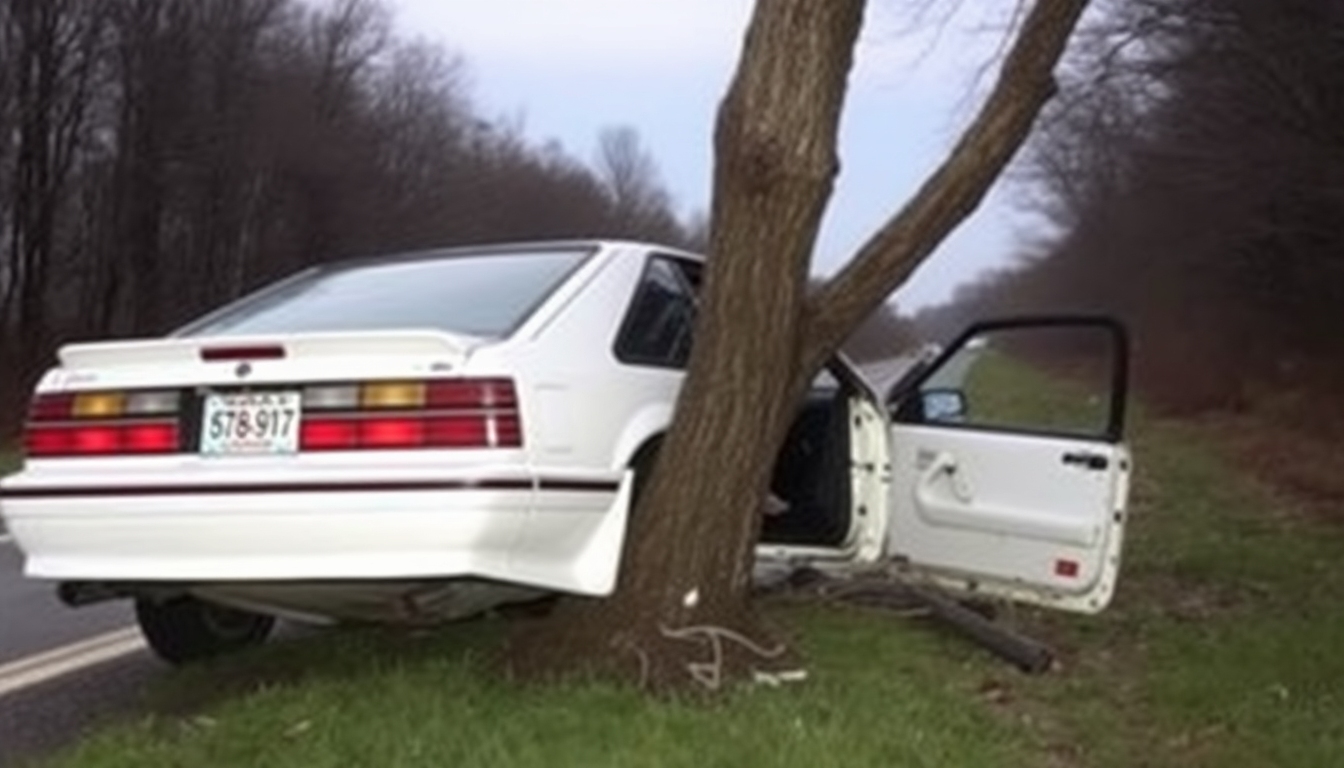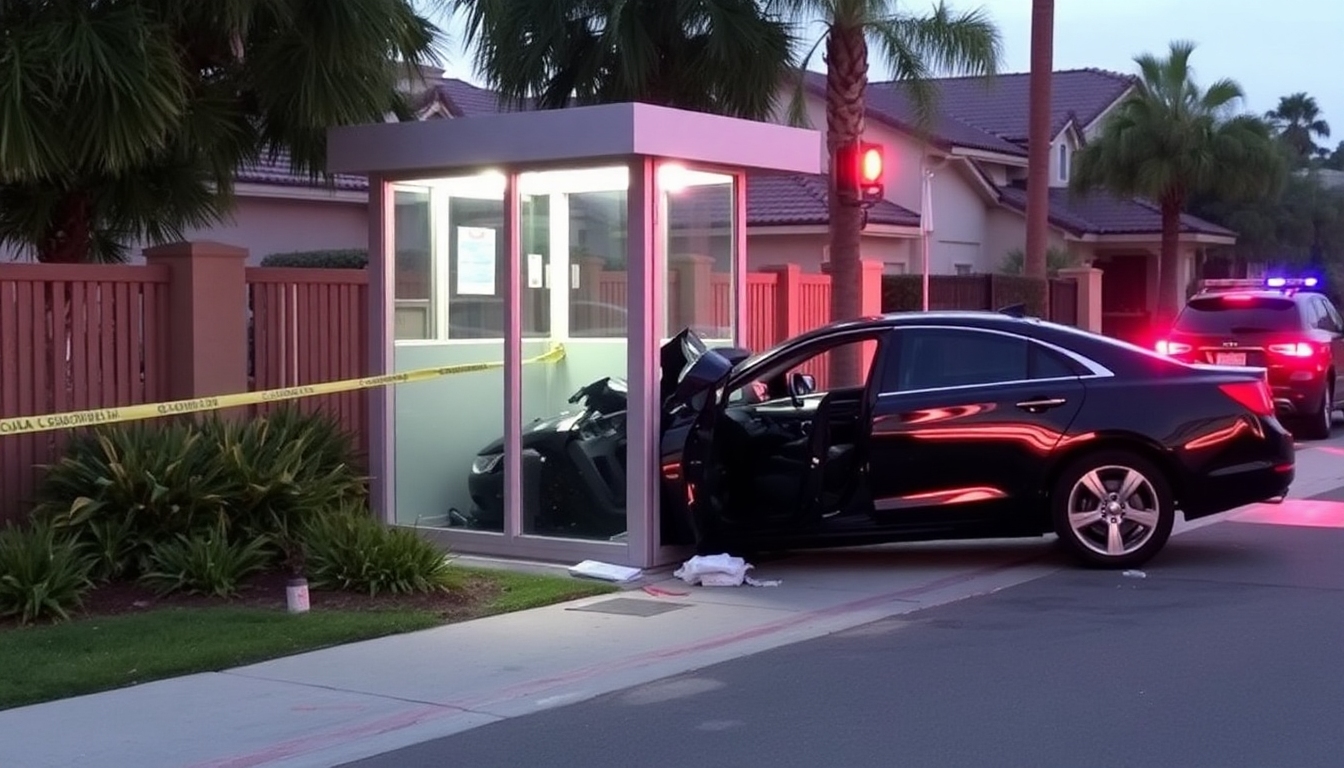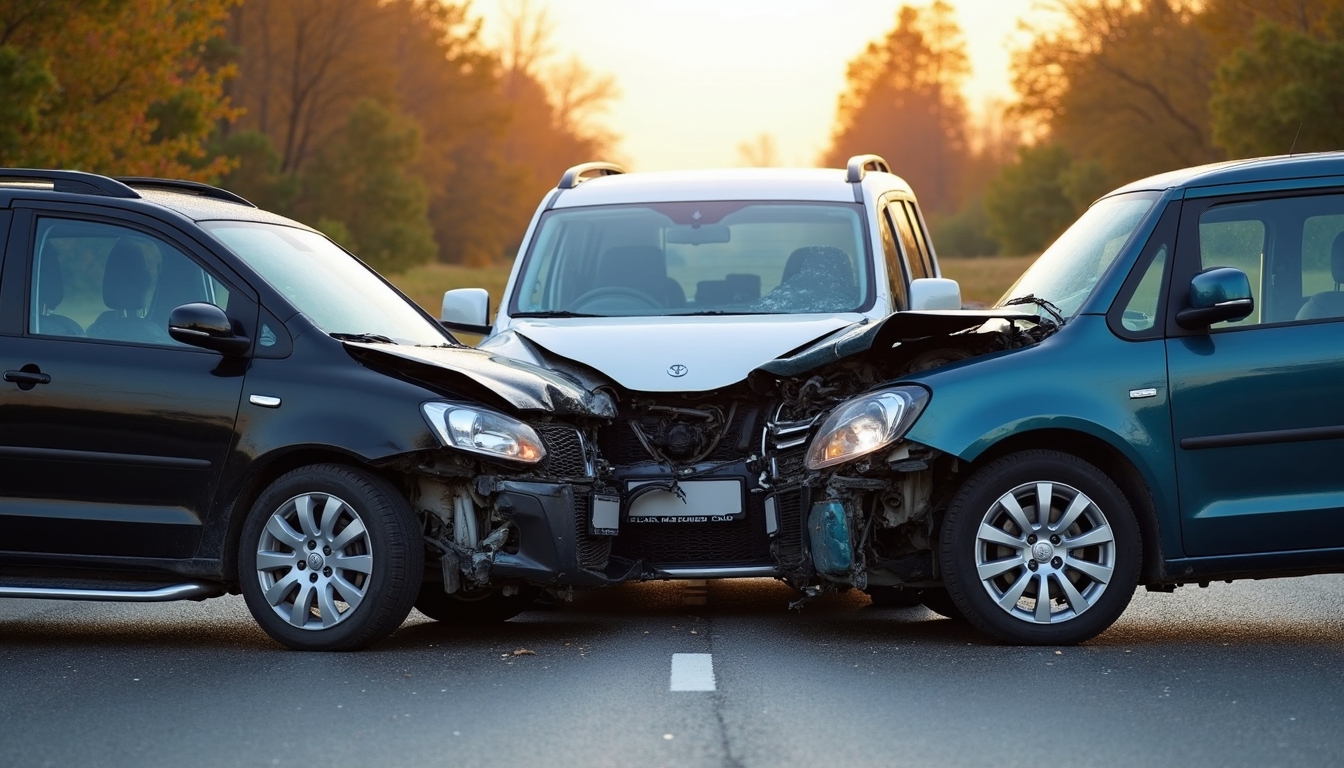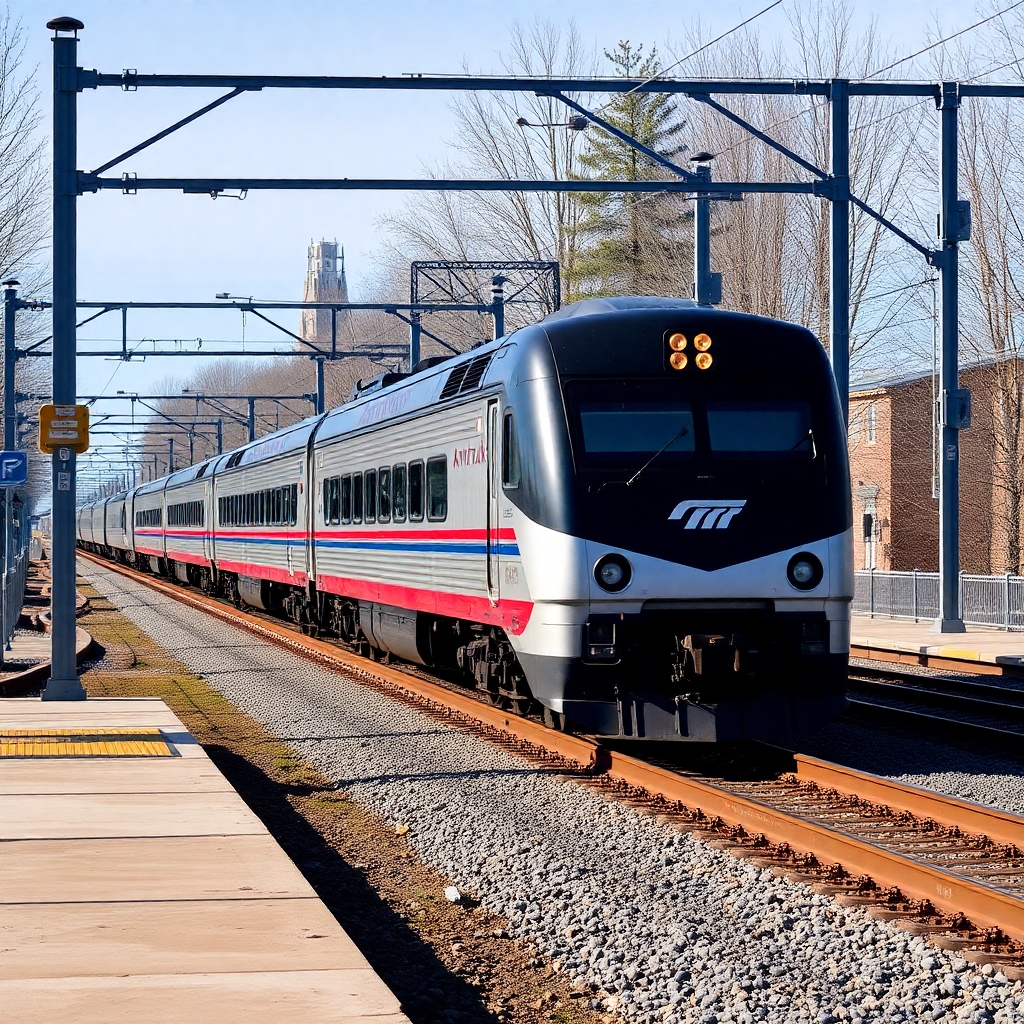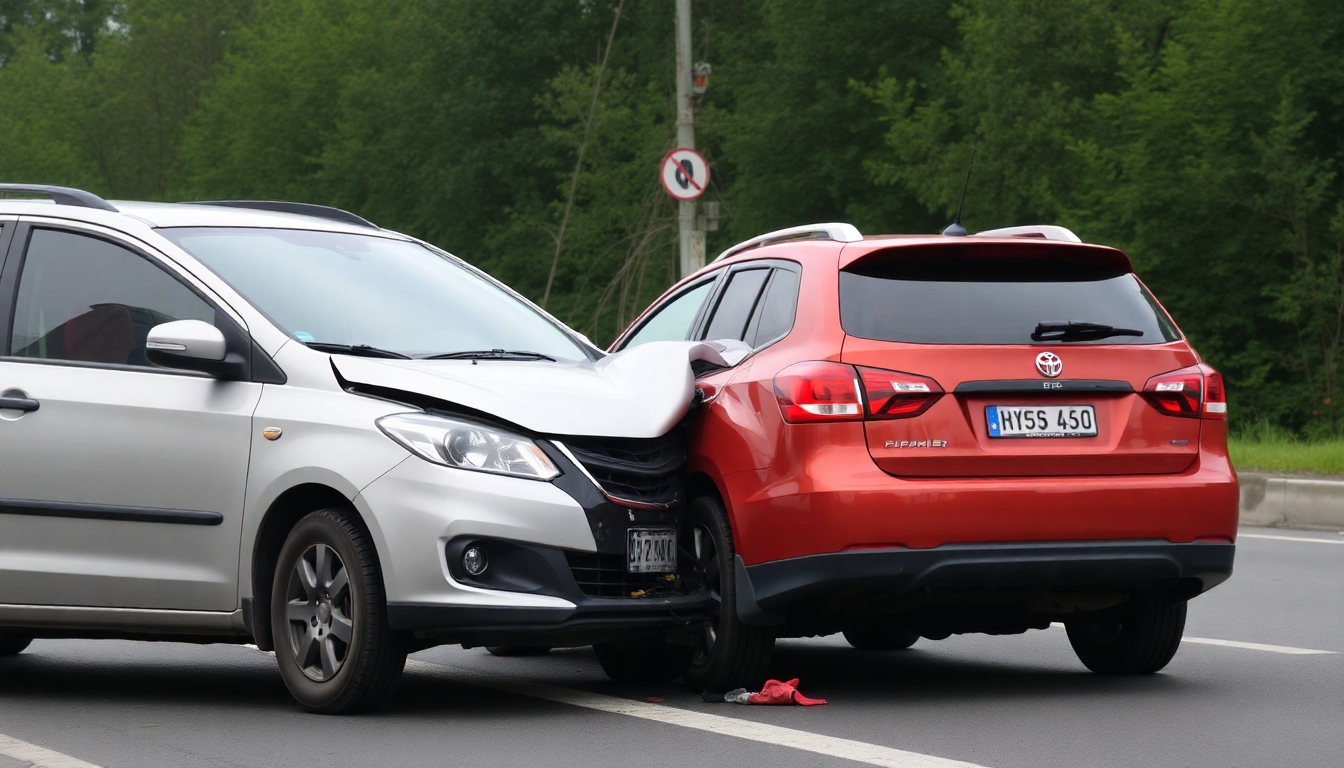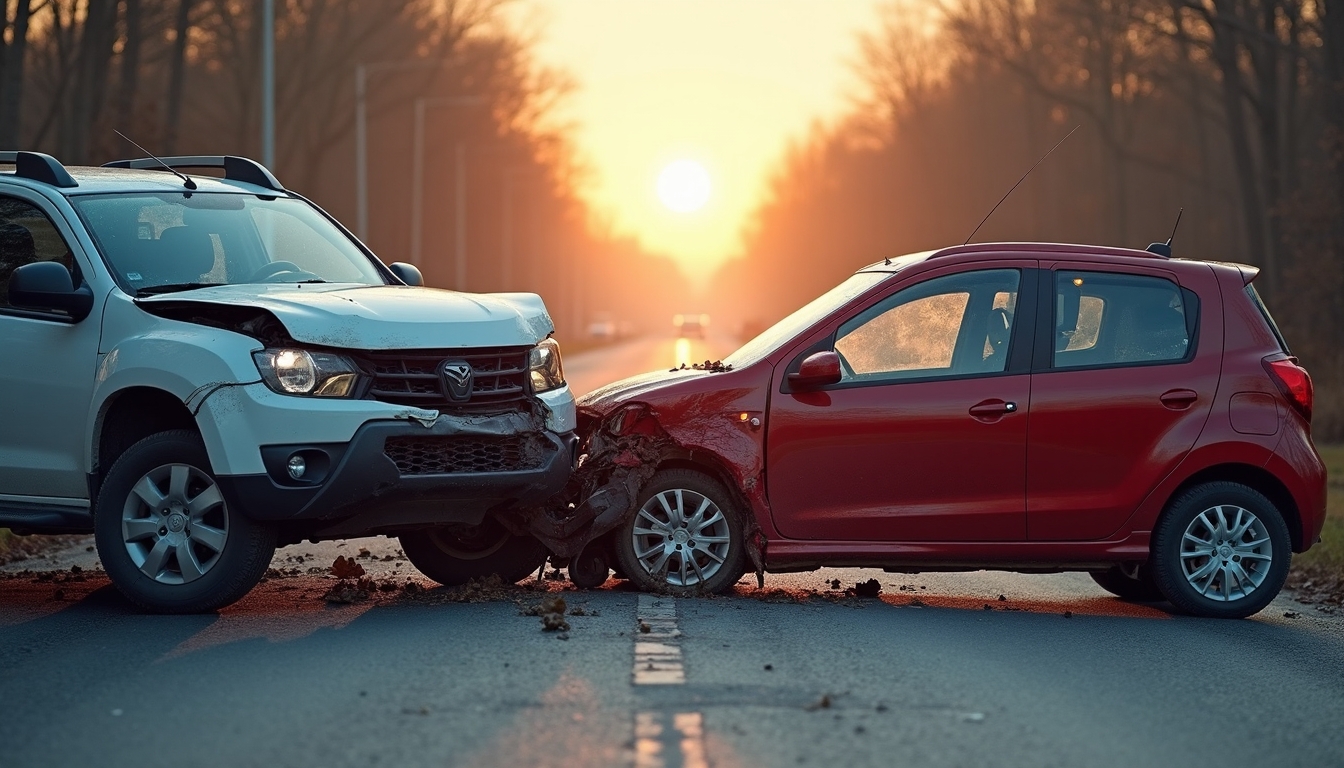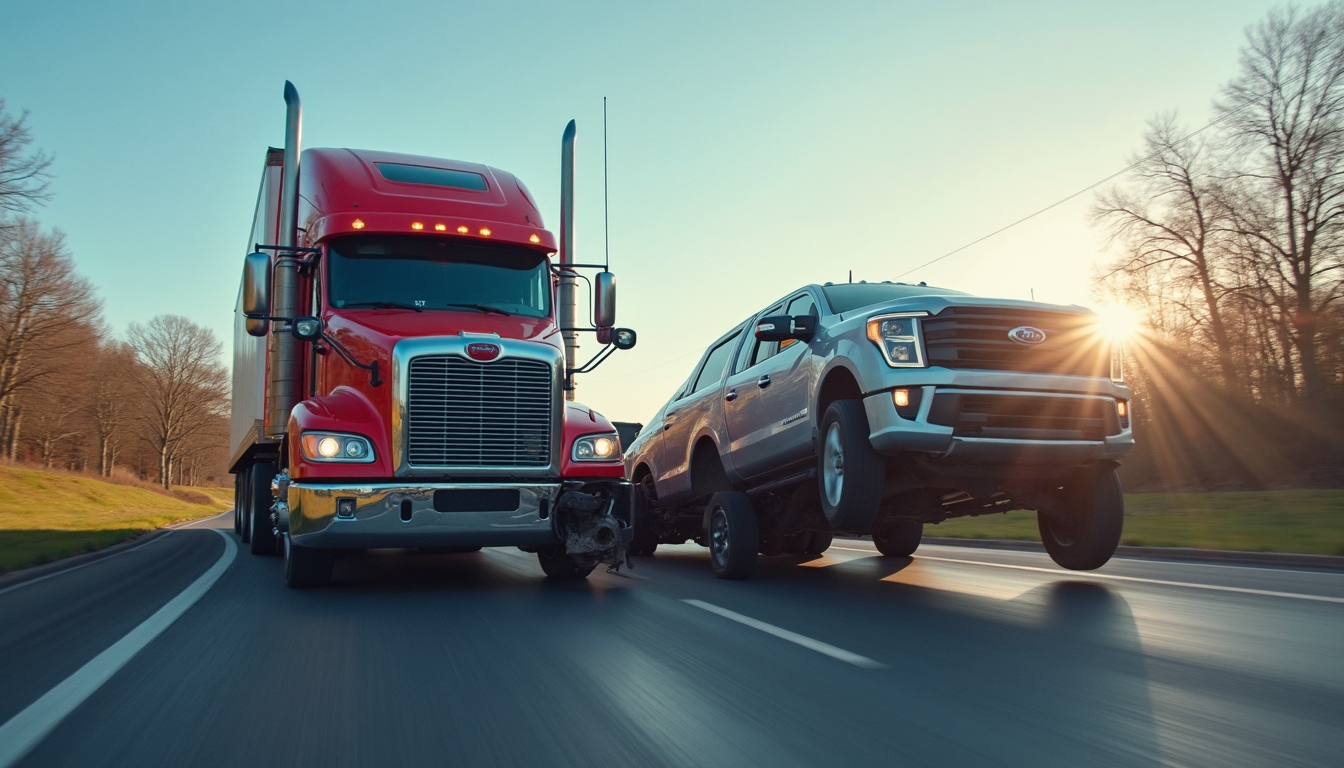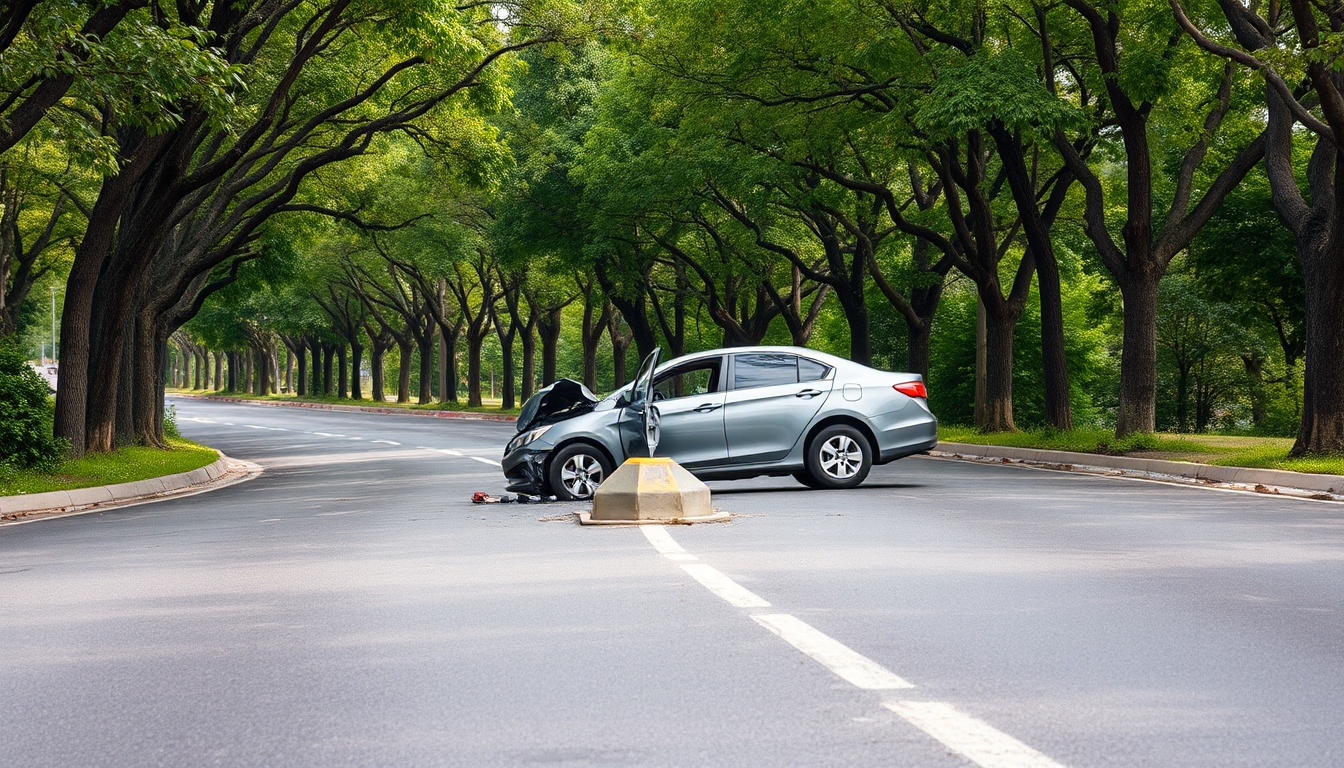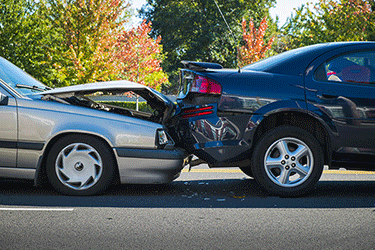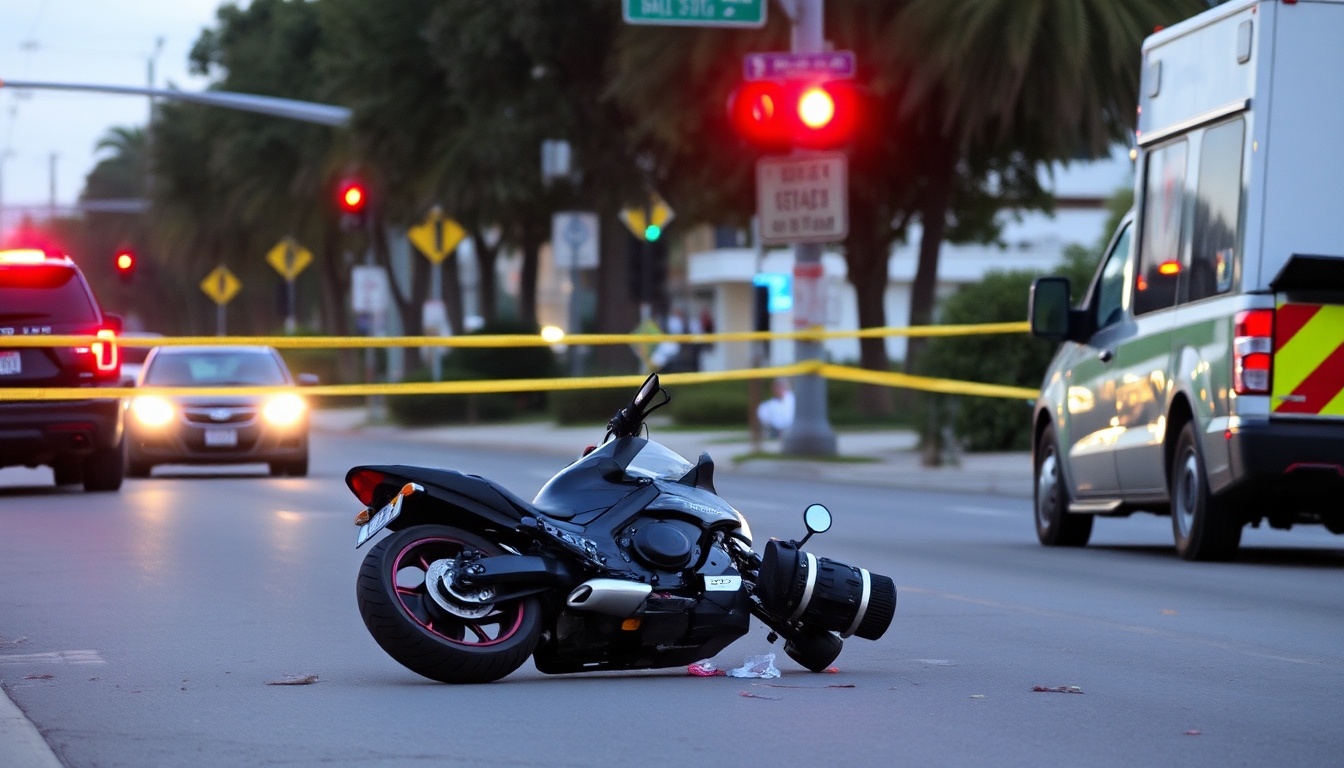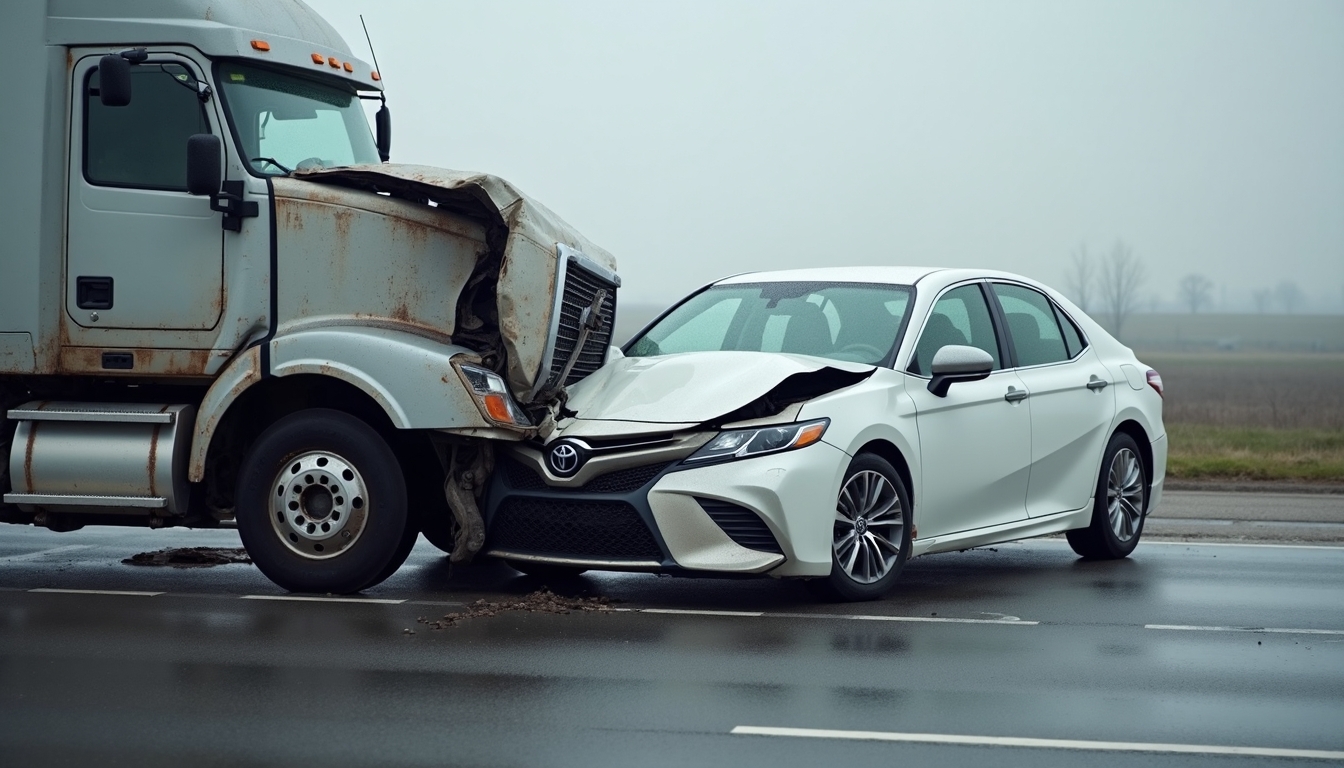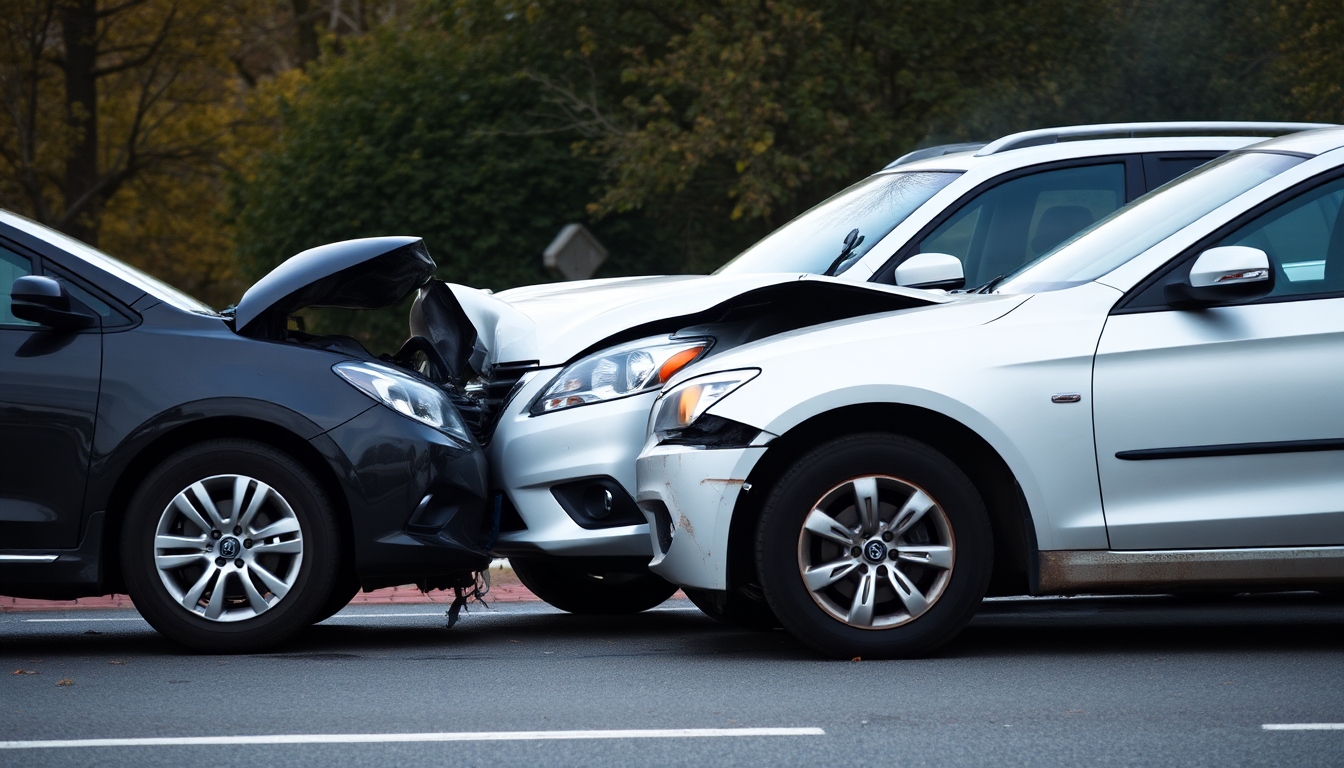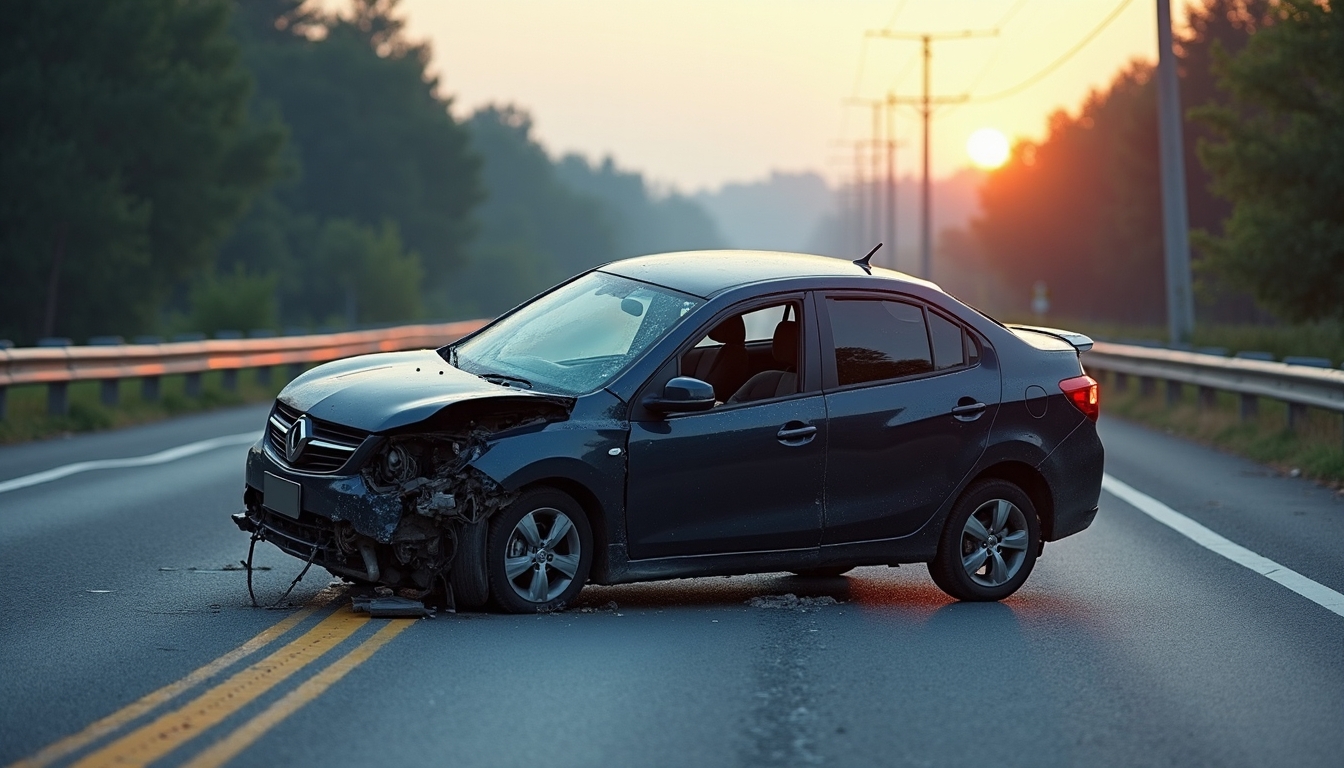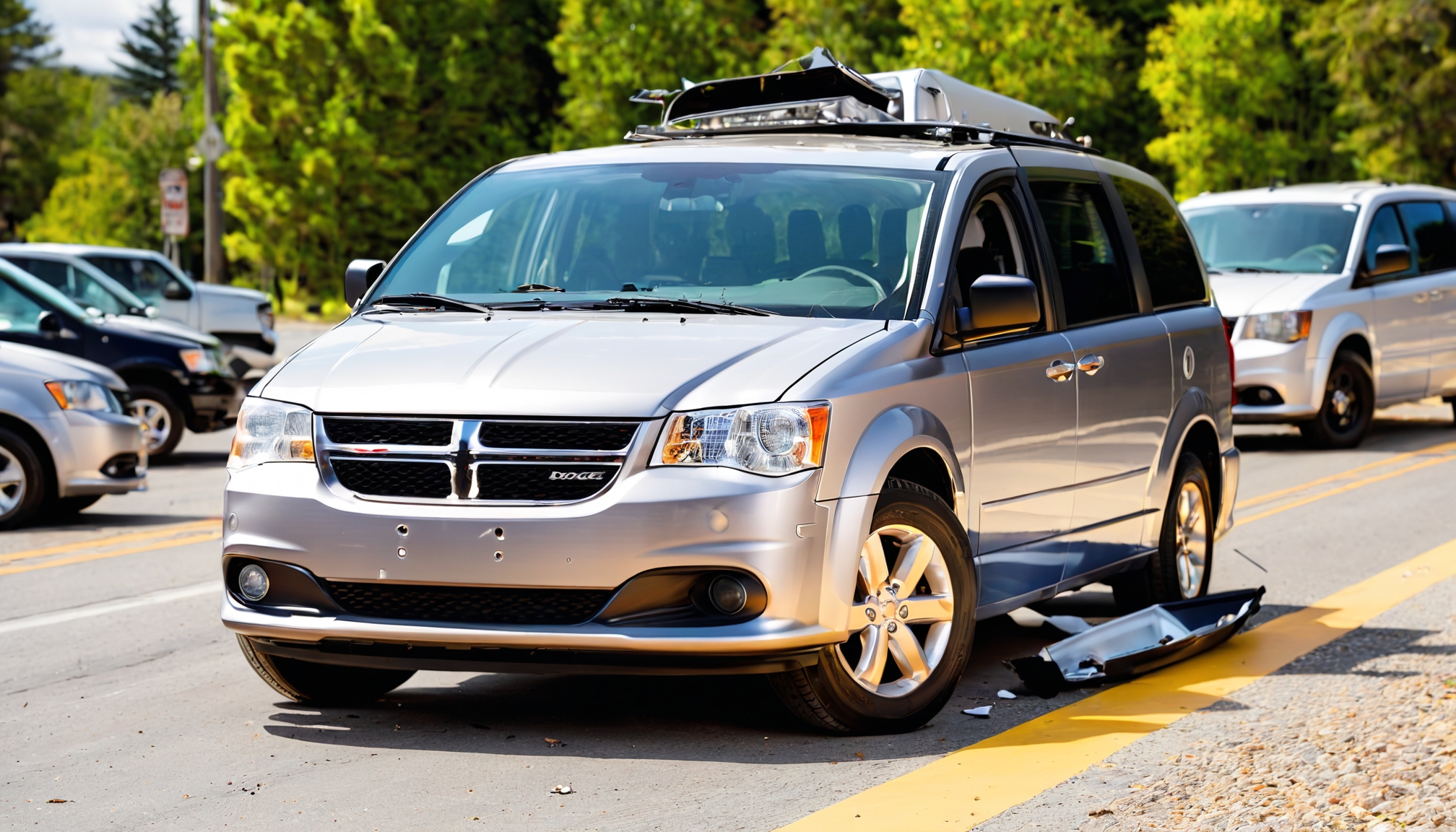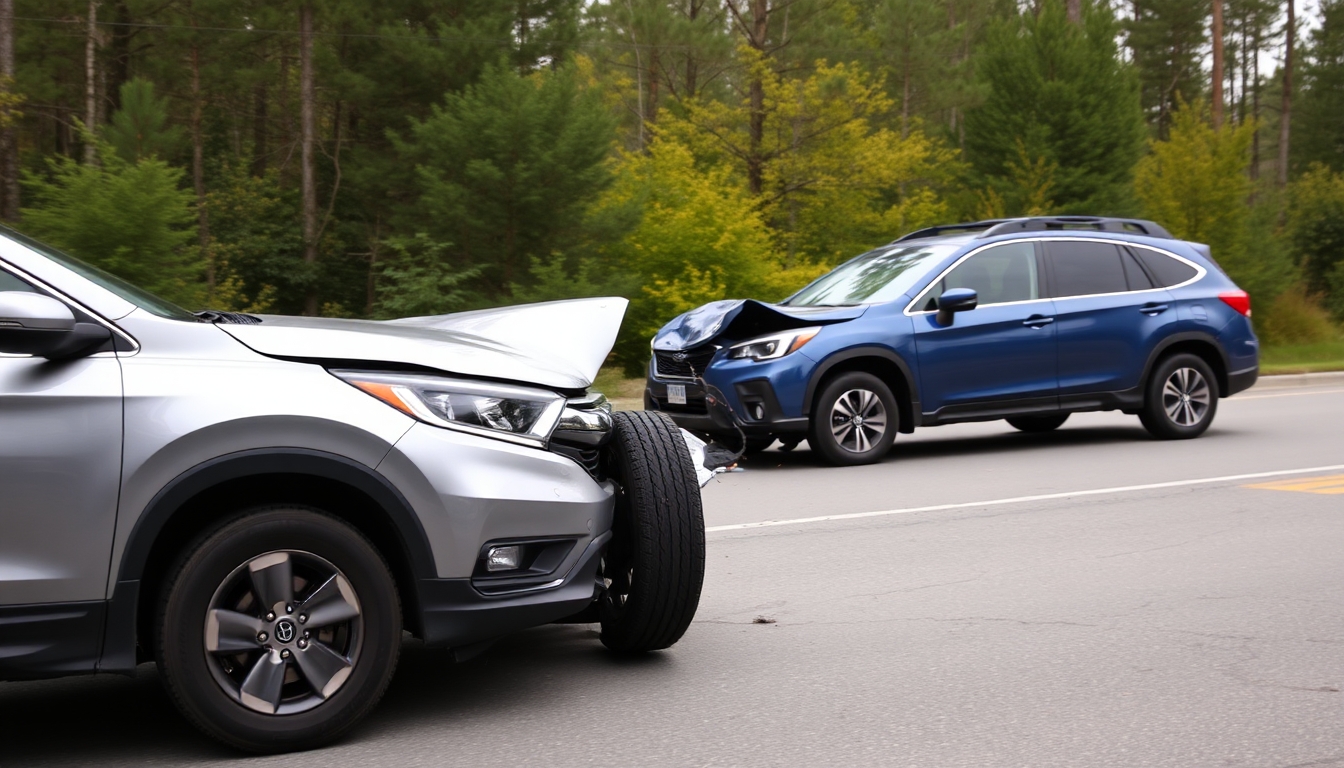Motorcyclist Seriously Injured in Red Light Collision at Blackstone and Herndon in Fresno
A traffic signal violation led to severe injuries for a motorcyclist after a BMW driver ran a red light in north Fresno on Sunday evening. The incident highlights the... Read More
Deadly Collision Claims Life in Pleasant Hill: Grayson Road Crash Incident
In a tragic incident that occurred Monday morning, January 27, 2025, a fatal collision between two vehicles on Grayson Road at Taylor Boulevard in Pleasant Hill resulted in one... Read More
Woman Injured in a Fatal Morning Crash at Pope and Watt Avenue Intersection in Arden-Arcade
A two-vehicle collision in Sacramento County’s Arden-Arcade neighborhood resulted in injuries to a female motorist on Friday morning, January 17, 2025. The incident, which occurred at the intersection of... Read More
Bicyclist Critically Injured in North Highlands Collision with Vehicle
A serious collision between a vehicle and a bicyclist occurred in North Highlands, Sacramento County, highlighting ongoing concerns about road safety for cyclists in the area. The incident took... Read More
Fatal DUI Crash in Lassen County Claims Life, Critically Injures Child
A devastating multi-vehicle collision on Highway 36 in Lassen County has resulted in one fatality and left a young girl fighting for her life, highlighting the tragic consequences of... Read More
Fatal Three-Vehicle Collision on Jackson Road Claims One Life, Injures Two in Sacramento
A devastating multi-vehicle crash near the intersection of Ione and Jackson roads in Sacramento resulted in one fatality and two injuries on Monday evening, January 13, 2025. The incident... Read More
Fatal Injury Hit-and-Run Crash Amidst Fresno Protest Leads to Two Hospitalizations
A three-vehicle collision during a large protest in Fresno resulted in two injuries and a driver fleeing the scene, highlighting concerns about traffic safety during mass demonstrations. The incident... Read More
Sacramento Highway 50 Motorcycle Accident: 1 Dead, 4 Injured in 13-Motorcycle Crash
In a devastating collision that occurred on Highway 50 in Sacramento this past Sunday morning, one person lost their life and four others suffered major injuries when a passenger... Read More
Fatal DUI Crash in Roseville Claims Life of 9-Year-Old Girl, Highlights Dangers of Impaired Driving
In a tragic incident that occurred early Saturday morning in Roseville, California, a suspected DUI-related crash resulted in the death of a nine-year-old girl, underscoring the devastating consequences of... Read More
Fatal Los Gatos Crash: Unrestrained Driver Ejected on Highway 85-17 Interchange
In a tragic incident Wednesday evening, a 65-year-old San Jose resident lost his life after being ejected from his vehicle during a single-car crash near the Highway 85 and... Read More
Fatal Collision in Fresno County Claims Four Lives in Tragic Intersection Crash
A devastating two-vehicle collision at the intersection of Floyd and Shaw avenues in Fresno County resulted in four fatalities and left two others injured on Friday night. The California... Read More
Fatal Multi-Vehicle Crash on Calvine and Waterman Roads in Sacramento County Leaves Two Injured
A three-vehicle collision occurred at the intersection of Calvine and Waterman roads in Sacramento County’s Vineyard area during the Wednesday morning commute, resulting in injuries and emergency response. The... Read More
Fatal Tracy CA Accident: DUI Driver Causes Deadly Head-On Crash on SR-4
In a tragic incident during the early morning hours of Wednesday, January 8, 2025, a devastating head-on collision on State Route 4 near Tracy resulted in one fatality and... Read More
UPS Truck Rollover Accident Reported at Highway 99 and Olive Avenue in Fresno
A UPS delivery truck was involved in a rollover accident in Fresno on Wednesday, raising concerns about commercial vehicle safety at major highway intersections. The incident, which occurred at... Read More
Fatal Multi-Vehicle Collision in Vineyard Area Sends Two to Hospital
A significant three-vehicle crash occurred Wednesday morning in the Vineyard area of Sacramento County, highlighting the ongoing concerns about traffic safety at major intersections. The incident, which took place... Read More
Pedestrian Suffers Fatal Head Injury in Fresno Crosswalk Accident
A serious pedestrian accident occurred in Fresno on Monday morning, January 7, 2025, highlighting ongoing concerns about pedestrian safety at intersections. The incident, which took place at the intersection... Read More
Sacramento Motorcycle Fatal Accident on Del Paso Boulevard Leaves Rider Seriously Injured
A motorcycle collision with a pickup truck in Sacramento resulted in major injuries to the motorcyclist on Monday afternoon, highlighting the ongoing concerns about motorcycle safety at busy intersections.... Read More
Fatal Fresno Rollover Crash Claims Two Lives in Suspected DUI Incident
A devastating rollover collision in Fresno has resulted in the deaths of two individuals, highlighting the tragic consequences of impaired driving. The incident, which involved a Chevrolet truck and... Read More
First Pedestrian Fatality of 2025: North San Jose Collision Claims Life of Man Outside Crosswalk
In a tragic start to the new year, San Jose recorded its first traffic fatality of 2025 when a pedestrian was struck and killed while crossing Berryessa Road on... Read More
Fatal Head-On Collision in Fairfield Claims Life of Young Driver
A tragic head-on collision in Fairfield has resulted in the death of a young driver, highlighting the devastating consequences of early morning crashes and the importance of road safety... Read More
Pedestrian Critically Injured in Early Morning Hit-and-Run Crash in Fresno
A devastating hit-and-run collision has left a male pedestrian fighting for his life in Fresno, raising concerns about pedestrian safety and driver accountability in the area. The incident occurred... Read More
Fatal Hit-and-Run Claims Pedestrian’s Life in San Francisco’s Silver Avenue Tragedy
A devastating hit-and-run collision in San Francisco’s Portola District has left one person dead, as authorities continue their search for the suspect who fled the scene. The incident occurred... Read More
Multi-Vehicle Collision Disrupts Traffic on Highway 50 in Sacramento
A multi-vehicle crash occurred on westbound Highway 50 near Stockton Boulevard in Sacramento on Friday afternoon, prompting an emergency response and causing traffic disruptions. The California Highway Patrol (CHP)... Read More
Car Crashes into Fresno Bagel Shop: Understanding Legal and Safety Implications
A car recently crashed into a bagel shop in Fresno, California, injuring several people. This article explores the legal and safety considerations surrounding the incident, including potential liability for... Read More
Fatal Crash Near Sacramento International Airport Claims Life of Elderly Driver
A devastating collision in the early hours of January 2, 2025, resulted in the death of an 87-year-old man near Sacramento International Airport. The crash occurred on the Airport... Read More
Fatal Gilroy Crash: Pregnant Woman Killed in Suspected DUI Collision
A devastating collision in Gilroy has resulted in the death of a pregnant woman, highlighting the continuing danger of impaired driving on Northern California roads. The incident, which occurred... Read More
Woman Killed in San Joaquin County Pedestrian Accident: Fatal Pickup Truck Collision on Mettler Road
Tragedy struck in San Joaquin County when a pedestrian accident claimed the life of one woman and left another injured. The incident occurred on Mettler Road, west of Ham... Read More
Fatal Pedestrian Accident on Abernathy Road in Solano County Under Investigation
A tragic collision between a pedestrian and a vehicle on Abernathy Road in Solano County has prompted an investigation by the California Highway Patrol (CHP). The incident occurred south... Read More
Pedestrian Suffers Major Injuries in South Sacramento Hit-and-Run Accident
A devastating hit-and-run collision left a female pedestrian with serious injuries in South Sacramento on Monday afternoon. The incident, which occurred at the intersection of Fruitridge Road and Dewey... Read More
Woman Fatally Struck by Vehicle in Natomas: Details of the Accident
Early Friday morning, December 27, 2024, a tragic accident claimed the life of a pedestrian in the Natomas area of Sacramento. According to the California Highway Patrol (CHP), the... Read More
Fatal Head-On Collision on Highway 132 Claims One Life, Injures Two in Stanislaus County
On Thursday evening, December 26, 2024, a devastating head-on collision occurred on Highway 132 east of Rushing Road in Stanislaus County. The accident resulted in one fatality and left... Read More
CHP Officer Injured in Roseville Collision After Driver Fails to Yield
A California Highway Patrol (CHP) motorcycle officer sustained minor injuries in a collision at the intersection of Woodcreek Oaks and Blue Oaks boulevards in Roseville. The incident occurred on... Read More
Teen Driver Arrested After Christmas Day DUI Hit-and-Run in Santa Rosa
A 19-year-old Santa Rosa resident faces multiple charges, including DUI and hit-and-run, following a Christmas Day collision that ended with a rollover crash on Highway 101. The incident highlights... Read More
Fatal Christmas Day Collision in Golden Gate Park Claims One Life
A tragic single-vehicle accident in San Francisco’s Golden Gate Park resulted in one fatality on Christmas Day when a vehicle crashed and burst into flames. The incident highlights the... Read More
Two Children and a Woman Injured in Sacramento County Intersection Fatal Crash
A collision at a busy Sacramento County intersection led to multiple injuries on Christmas Eve morning, highlighting the importance of road safety during the holiday season. Accident Details and... Read More
Multi-Vehicle Crash Accident on Business 80 in Sacramento Results in Injury
A serious collision involving multiple vehicles occurred during the morning commute in Sacramento, leading to one injury and significant traffic disruption. The incident, which took place on December 24,... Read More
Fatal Pedestrian Accident Claims Life on Cordelia Road in Fairfield
A tragic pedestrian accident on Christmas Eve has claimed the life of a male pedestrian in Fairfield, highlighting the ongoing concerns about pedestrian safety on local roads. The incident... Read More
Elderly Man Killed in Hit-and-Run Collision in Hayward: A Community Call for Justice
In a tragic incident that has shaken the Hayward community, an 82-year-old man lost his life following a hit-and-run collision early Monday morning. The incident highlights the ongoing concerns... Read More
Fatal Head-On Collision with Propane Truck Raises Safety Concerns on Grass Valley Highway
A tragic head-on collision claimed the life of a 45-year-old woman early Monday morning, Dec 23rd on Grass Valley Highway south of Joeger Road in North Auburn, Placer County.... Read More
Fatal Big Rig Collision on Highway 20 Near Williams Highlights Rural Road Risks
A tragic collision between a big rig and another vehicle claimed at least one life Monday morning, Dec 23 at the intersection of Highway 20 and Leesville Road near... Read More
Rare Shelby Cobra Fatal Crash on Highway 50 Raises Classic Car Safety and Insurance Considerations
A recent single-vehicle crash east of Sacramento involving a Shelby Cobra has highlighted important safety considerations for classic car ownership and operation. California Highway Patrol officers responded to the... Read More
Fatal Box Truck Accident on I-5 Claims Two Lives in San Joaquin County
A tragic single-vehicle accident on Interstate 5 in San Joaquin County resulted in the deaths of two Santa Clara residents and left two others injured on Thursday afternoon. The... Read More
High-Speed Collision in North Chico Results in Catastrophic Vehicle Split
A devastating high-speed crash in north Chico on Wednesday, December 18, resulted in a parked vehicle being torn in half, highlighting the extreme dangers of excessive speed on residential... Read More
Fatal Canal Accident in Sutter County Highlights Rural Road Safety Concerns
In a tragic incident that underscores the dangers of rural road driving and water hazards, a 57-year-old man lost his life when his Ford F-250 overturned into a canal... Read More
Fatal Motorcycle Collision in Santa Cruz Mountains Under CHP Investigation
A tragic collision in the Santa Cruz Mountains has claimed the life of a Los Gatos motorcyclist, prompting an extensive investigation by the California Highway Patrol. The incident occurred... Read More
Vehicle Fatally Crashes Into A Club on Portola Drive, Leaving Three Injured
In a concerning incident that highlights the risks of vehicle-building collisions, a vehicle crashed through the front of Miraloma Club on Portola Drive in San Francisco, resulting in injuries... Read More
San Jose I-280 Off-Ramp Collision Raises Questions About Intersection Safety
A significant two-vehicle collision at the Interstate 280 South and McLaughlin Avenue off-ramp in San Jose has highlighted the unique dangers of highway exit ramp intersections. The incident, which... Read More
Six-Vehicle Collision on Highway 85 in Mountain View Highlights Complexities of Multi-Vehicle Accidents
A complex multi-vehicle collision occurred during the early morning commute on Highway 85 near El Camino Real in Mountain View, raising important questions about liability and safety in chain-reaction... Read More
Fatal Crash in Gridley Underscores the Deadly Combination of Speed and Alcohol
A tragic single-vehicle collision in Gridley, California has claimed the life of a driver, highlighting the devastating consequences of combining excessive speed with alcohol consumption. The incident, which occurred... Read More
Tragic Interstate 5 Crash Claims Young Life in Northern California
In a heartbreaking incident that has shaken the Northern California community, an eight-year-old child lost their life in a devastating single-vehicle collision on Interstate 5 near the Interstate 80... Read More
Tragic Collision Claims Four Lives on State Route 165 in Stanislaus County
A devastating collision on State Route 165 at Greenway Avenue has left the Stanislaus County community in mourning after claiming four lives, including a teenage girl, and leaving two... Read More
Hit-and-Run on South Bascom Avenue Raises Important Legal Questions About Driver Responsibility
A hit-and-run incident at the intersection of South Bascom Avenue and Foxworthy Avenue in San Jose has brought attention to the critical issue of driver responsibility and legal obligations... Read More
AC Transit Bus Hit-and-Run in Oakland Highlights Passenger Rights and Safety Concerns
A concerning hit-and-run collision involving an AC Transit bus in Oakland has left four passengers injured, raising important questions about passenger safety and legal rights in public transit accidents.... Read More
Vehicle Collision at West Portal Walgreens Raises Questions About Storefront Safety
A concerning incident occurred Wednesday morning when a vehicle crashed into a Walgreens store in San Francisco’s West Portal neighbourhood, resulting in injuries to both the driver and a... Read More
Multiple Crashes on I-80 Near Vallejo Result in Fatality, Prompting Safety Discussion
A series of early morning collisions on Interstate 80 near Vallejo has resulted in at least one fatality, bringing attention to the challenges of rush-hour commuting and highway safety... Read More
Fatal Pedestrian Accident on Highway 101 Near SFO Causes Major Traffic Disruption
A tragic incident near San Francisco International Airport (SFO) Tuesday morning resulted in a pedestrian fatality and significant traffic delays on northbound U.S. Highway 101. The accident, which occurred... Read More
Fatal Multi-Vehicle Accident on Interstate 80 Solano County: Safety Tips for Bay Area Drivers
A series of early morning collisions on Interstate 80 in Solano County turned fatal Tuesday, Dec 10, highlighting the heightened risks of dawn highway travel. The incidents, which occurred... Read More
Tragic Head-On Collision in Gilroy Claims Life of Elderly San Mateo Driver
A tragic incident on Highway 152 in Gilroy has claimed the life of a 79-year-old San Mateo woman following a head-on collision with a commercial truck. The accident, which... Read More
Fatal Pedestrian Accident Closes Highway 101 in South San Francisco
A tragic incident occurred early Tuesday morning, Dec 10, when a pedestrian was fatally struck by a vehicle on northbound Highway 101 in South San Francisco, resulting in a... Read More
Fatal Single-Vehicle Collision on Snell Avenue Raises Road Safety Questions
In a tragic incident that occurred Monday morning in San Jose, a driver lost his life in a single-vehicle collision near the intersection of Snell Avenue and Truckee Lane.... Read More
Tragic Discovery Bay Crash Highlights Security Guard Safety Concerns
In a devastating incident that has shaken the Discovery Bay community, a security guard lost their life and another was critically injured when a juvenile driver crashed into their... Read More
Motorcycle Accident on El Camino Avenue Raises Safety Concerns in Arden-Arcade Area
A collision between a motorcycle and a vehicle on Friday afternoon has raised concerns about motorcycle safety in Sacramento County’s Arden-Arcade neighborhood. The incident, north of El Camino Avenue... Read More
Three-Vehicle Fatal Crash on Gyle Road Raises Safety Concerns in Tehama County
A fatal multi-vehicle collision occurred Wednesday afternoon at the intersection of Gyle Road and Rawson Road near Richfield, Tehama County, prompting an emergency response and raising questions about rural... Read More
Train Safety and Trespassing: Recent Amtrak Tragic Incident Highlights Ongoing Safety Concerns
A tragic incident occurred Tuesday evening when an individual was struck by Amtrak Train 547 on the tracks between Davis and the Fairfield-Vacaville station in California. The incident, which... Read More
Fatal Multi-Vehicle Crash on I-5 Claims Life of 24-Year-Old Passenger in Fresno Area
In a tragic incident that occurred in the early hours of Monday, December 2, 2024, a fatal collision involving multiple vehicles on Interstate 5 resulted in the death of... Read More
Wrong-Way Driver Causes Fatal Rollover Crash in Clovis
In a serious incident that occurred during the early morning hours of Monday, December 2nd, a wrong-way driver caused a rollover crash in Clovis, California, resulting in one person... Read More
Fatal Three-Vehicle Collision on Mariposa Road Claims One Life in San Joaquin County
A devastating head-on collision in San Joaquin County resulted in one fatality and multiple injuries on Sunday evening, highlighting the ongoing concerns about roadway safety in the region. The... Read More
Fatal Crash in Lakehead Claims Life After Vehicle Plunges into Salt Creek
A tragic incident in Lakehead, California, has left one person dead and another injured after a vehicle crashed into Salt Creek on Friday morning. The accident highlights the ongoing... Read More
Fatal Crash on Highway 180 Claims Life, Raises Concerns About Wet Weather Driving Safety
A tragic single-vehicle accident in Fresno has claimed one life and left another person injured, highlighting the critical importance of wet weather driving safety on Central Valley highways. The... Read More
Fatal Pedestrian Accident on I-680 Highlights Critical Highway Safety Concerns
A devastating collision on Interstate 680 South near the Berryessa Road East on-ramp in San Jose has claimed the life of a pedestrian, raising urgent questions about highway safety... Read More
Multi-Vehicle DUI Crash on I-80 in Fairfield Results in Injuries and Arrest
A serious four-vehicle collision on Interstate 80 in Fairfield early Sunday morning has highlighted the ongoing dangers of drunk driving on California highways. The crash, which occurred around 1:38... Read More
Fatal Two-Vehicle Collision on I-80 in Vallejo Disrupts Friday Afternoon Traffic
A two-vehicle collision occurred on westbound Interstate 80 in Vallejo on Friday afternoon, November 22nd, highlighting the ongoing concerns about traffic safety in this heavily travelled corridor. The incident,... Read More
Tragic I-215 Motorcycle Accident Highlights Critical Safety Concerns for Riverside Riders
A tragic motorcycle accident on Wednesday afternoon claimed the life of a rider on Interstate 215 in Riverside. The incident, which occurred near Center Street around 3 p.m., is... Read More
Fatal Collision in Boyle Heights Claims Life of Elderly Man, Injures Two Teens
A devastating two-vehicle crash in Boyle Heights claimed the life of a 77-year-old man and left two teenagers injured on Thursday evening, highlighting the ongoing concerns about traffic safety... Read More
Tragic Hit-and-Run Claims Lives of Pedestrian and Dog in Live Oak
A devastating hit-and-run crash in Live Oak early Wednesday morning has left a community grieving and raised serious concerns about pedestrian safety in residential neighbourhoods. The incident, which occurred... Read More
Fatal Intersection Collision Claims Life in Fresno County
In a tragic incident on Tuesday afternoon, November 12, 2024, a man lost his life in a collision with a semi-truck at the intersection of Elkhorn and Howard in... Read More
Fatal Collision in Stockton Claims Life of Woman in Her 30s
In a tragic incident that occurred on Sunday afternoon, November 10, 2024, a woman lost her life following a devastating collision between her vehicle and a semi-truck in Stockton,... Read More
What To Do If You Cause An Accident: A Comprehensive Guide
Immediate Actions at the Scene 1. Stay Calm and Stay Put The moments immediately following an accident are crucial. Pull your vehicle to a safe location if possible, but... Read More
Wheelchair-Bound Woman Dies After Being Struck by Vehicle in Southeast Fresno
In a tragic incident on Saturday evening, November 9, a woman using a wheelchair lost her life after being struck by a vehicle while crossing Clovis Avenue in southeast... Read More
Tragic Hit-and-Run at Solano Town Center Raises Questions About Mental Health and Hate Crimes
In a disturbing incident that has shaken the Fairfield community, a 25-year-old man faces murder and hate crime charges after allegedly intentionally running over a pedestrian multiple times at... Read More
Fatal Hit-and-Run in Manteca Claims Local Resident’s Life, Driver Remains at Large
A devastating hit-and-run incident in Manteca has left the local community in mourning as police continue their search for the driver responsible for the fatal crash. The incident has... Read More
Fatal Single-Vehicle Crash in Roseville Highlights Importance of Nighttime Driving Safety
A devastating crash in Roseville early Saturday morning, November 2, claimed the life of a 21-year-old Sacramento man, highlighting the critical importance of nighttime driving safety. The single-vehicle accident... Read More
Two-Vehicle Collision on Halloween Night Raises Safety Concerns at North Highlands Intersection
A serious collision between two SUVs in North Highlands on Halloween evening has raised concerns about intersection safety in the area. The incident, which occurred at the intersection of... Read More
California Minimum Auto Insurance Requirements
When an accident occurs in California, whether an automobile accident or an accident such as a slip and fall on someone else’s property, the way that injuries are almost... Read More
Fatal Head-On Collision on I-5 Near Los Banos Highlights Nighttime Driving Dangers
A devastating head-on collision on Interstate 5 near Highway 152 in Merced County claimed at least two lives early Wednesday morning, October 30th. The crash occurred around 1 a.m.... Read More
Fatal Motorcycle Accident in Antioch Highlights Need for Motorcycle Safety
A tragic motorcycle accident in Antioch, California has reminded our community of the critical importance of motorcycle safety. The incident, which occurred on October 28, 2024, resulted in the... Read More
Bicycle Accident in Oakland Hills Prompts Discussion on Cycling Safety
A tragic solo bicycle accident in the Oakland Hills has claimed the life of a 44-year-old male cyclist, raising important concerns about bicycle safety and the critical role of... Read More
Fatal Collision on I-580 Oakland Interchange Raises Safety Concerns
A tragic collision between a semi-truck and a Toyota Camry on Saturday afternoon claimed the life of the Toyota’s driver at one of Oakland’s busiest highway interchanges. The incident,... Read More
Fatal Solo-Vehicle Crash in Napa County Highlights Dangers of Impaired and High-Speed Driving
A tragic solo-vehicle crash claimed the life of a driver early Sunday morning in Napa County, according to the California Highway Patrol (CHP). The incident, which occurred around 3:20... Read More
Fatal Motorcycle Collision Claims Life of Teen Rider in Pleasant Hill
In a tragic incident that has shaken the Pleasant Hill community, an 18-year-old motorcyclist lost his life following a collision with a vehicle on Contra Costa Boulevard. The accident,... Read More
Fatal DUI Crash Near Orange Cove Results in One Death, Multiple Injuries
A devastating collision in Fresno County has claimed one life and left several others injured in what authorities are investigating as a DUI-related crash. The incident occurred on Saturday... Read More
Driver Dies in Fiery Crash on Highway 4 in Antioch
A tragic accident on Highway 4 in Antioch claimed the life of one man early Sunday morning. The California Highway Patrol (CHP) reported that the crash occurred on the... Read More
Fatal Multi-Vehicle Crash on Highway 101 in Monterey County
A tragic multi-vehicle collision on Highway 101 near Gonzales, Monterey County, resulted in one fatality and multiple injuries on Saturday, October 19, 2024. The California Highway Patrol (CHP) reported... Read More
Fatal Single-Vehicle Crash in Modesto Highlights Need for Enhanced Road Safety Measures
In the early hours of Friday morning Oct 18, 2024, a tragic incident unfolded in Modesto, California, serving as a stark reminder of the importance of road safety and... Read More
Fatal Hit-and-Run in San José: Pedestrian Killed, Driver Apprehended
On the evening of October 16, 2024, a tragic hit-and-run incident in San José, California, resulted in the death of a pedestrian. The San José Police Department (SJPD) responded... Read More
Halloween Safety Tips for Kids, Teens, and Adults
Halloween is a night full of fun for kids, teens, and adults. People love dressing up, getting candy, and going to parties. But with so many people out at... Read More
Fatal Multi-Vehicle Crash Shuts Down Highway 120 in Manteca
On Tuesday, October 15, 2024, a devastating multi-vehicle collision on Highway 120 in Manteca, California, resulted in one fatality and left several others critically injured. The Manteca Fire Department... Read More
Fatal Crash in Antelope Claims Life of 18-Year-Old Passenger
A devastating collision near the Sacramento-Placer County line has left one young man dead and another facing serious legal consequences. The incident serves as a stark reminder of the... Read More
Fatal Collision on U.S. Highway 101 in Geyserville Leaves One Dead, Six Injured
A tragic traffic collision on U.S. Highway 101 in Geyserville, Sonoma County, resulted in one fatality and multiple injuries on Saturday, October 12. The incident, which occurred just after... Read More
Two-Vehicle Crash Disrupts Evening Commute in Arden-Arcade, Sacramento County
On the afternoon of Tuesday, October 8, 2024, a two-vehicle collision brought traffic to a standstill on Howe Avenue near Wyda Way in the Arden-Arcade area of Sacramento County.... Read More


